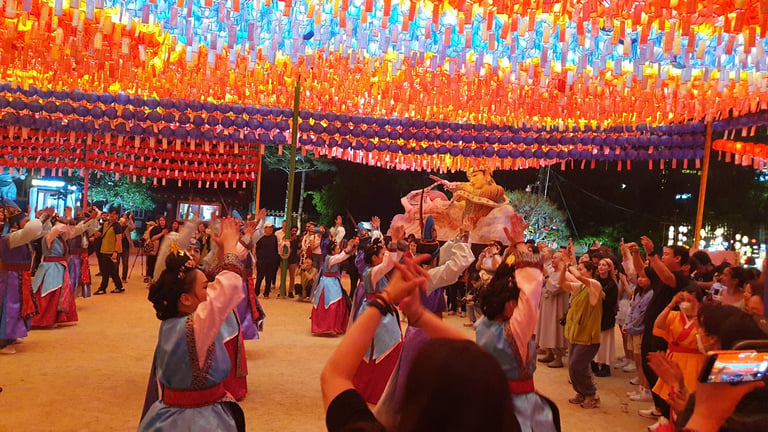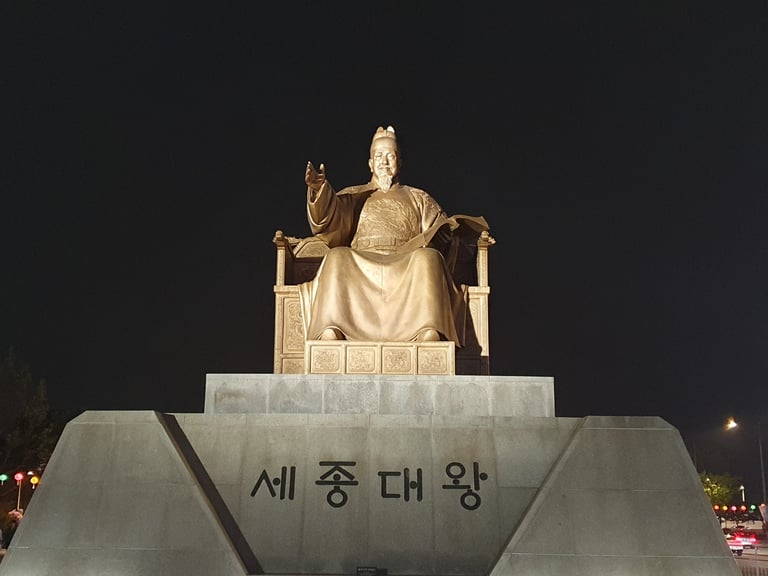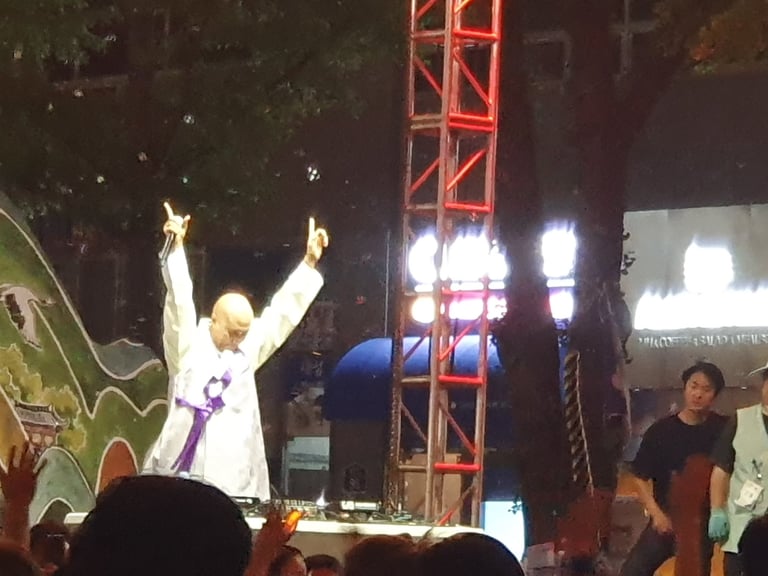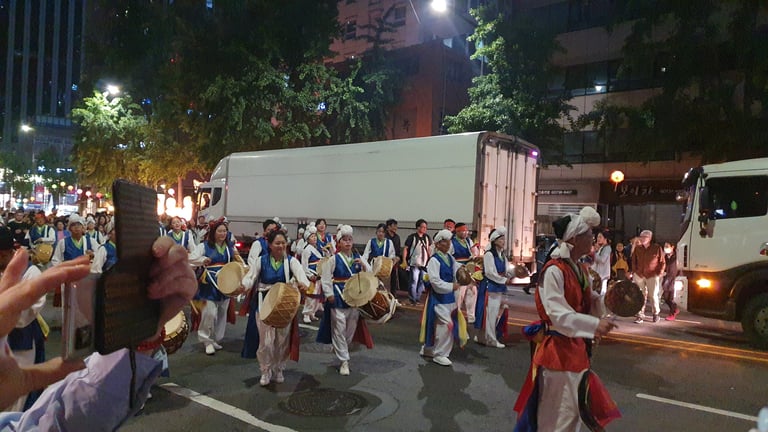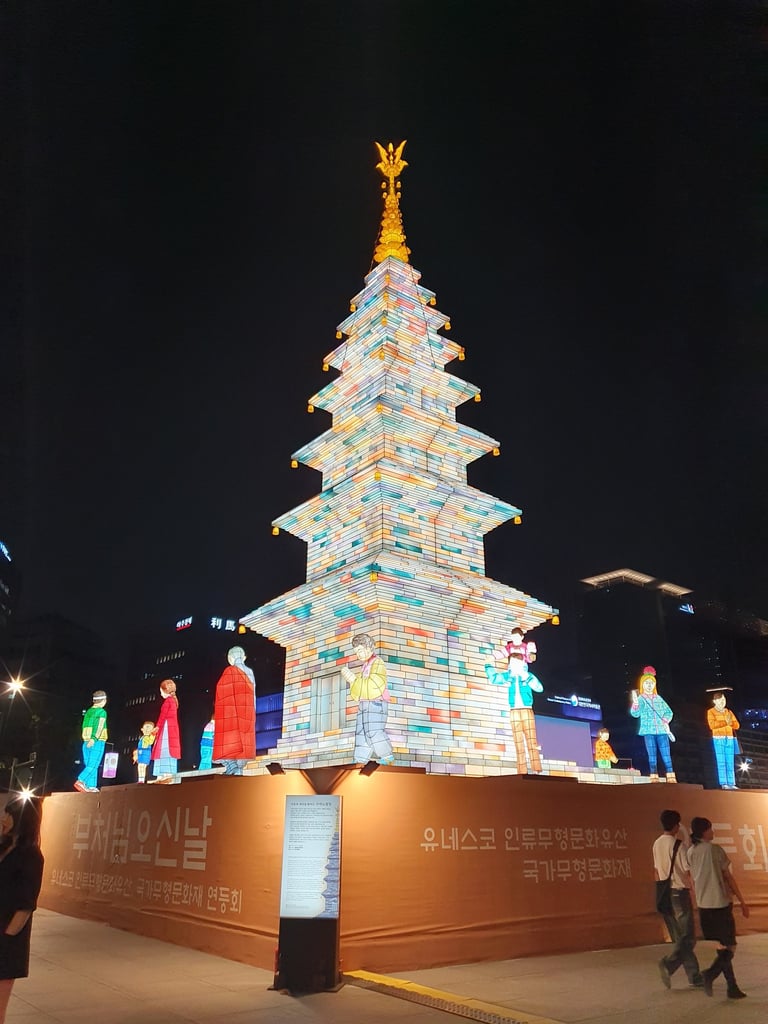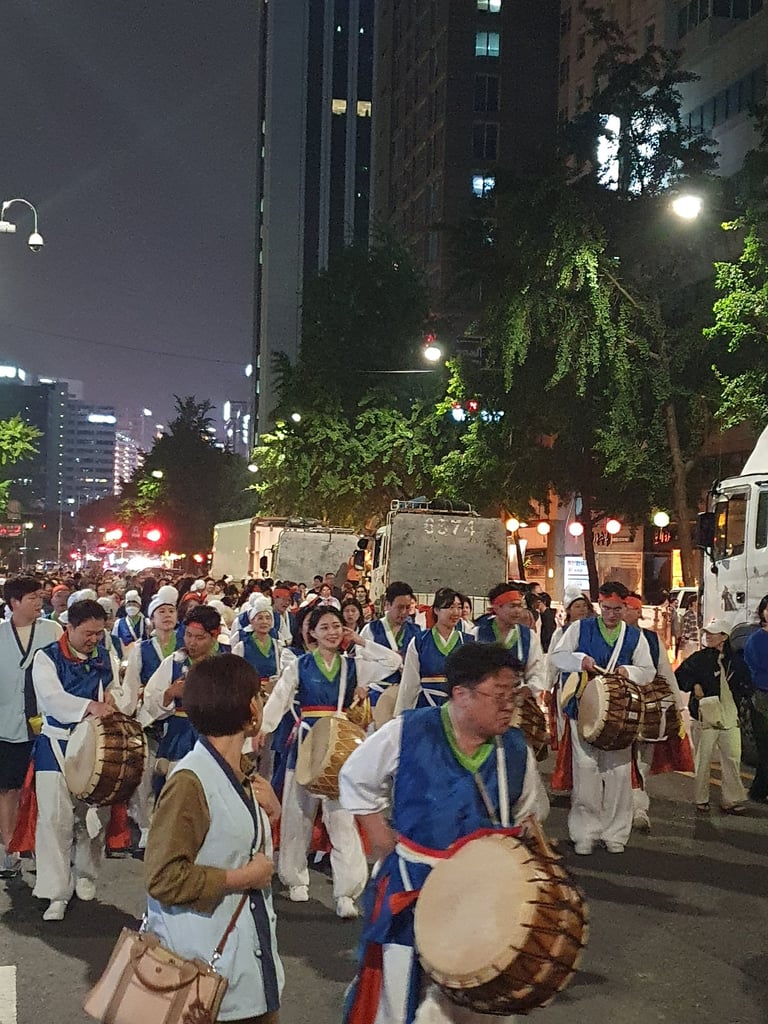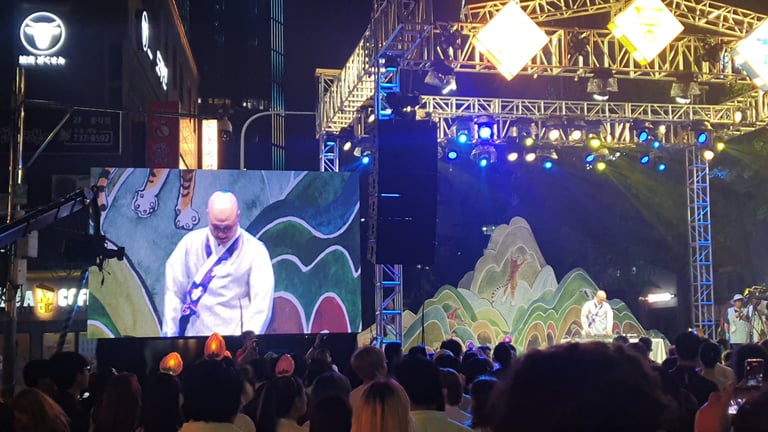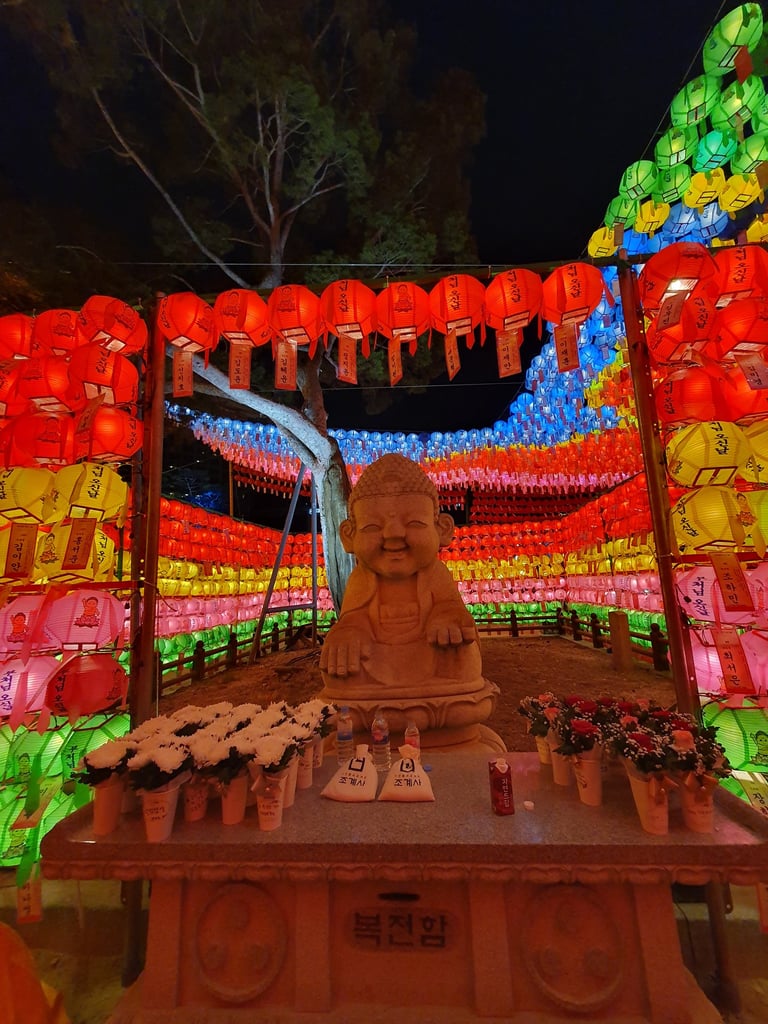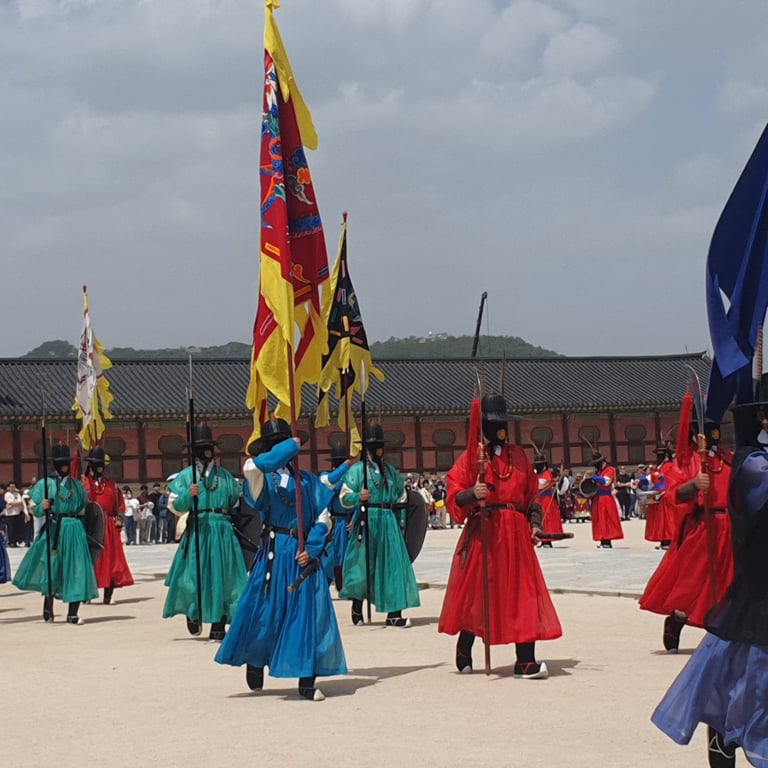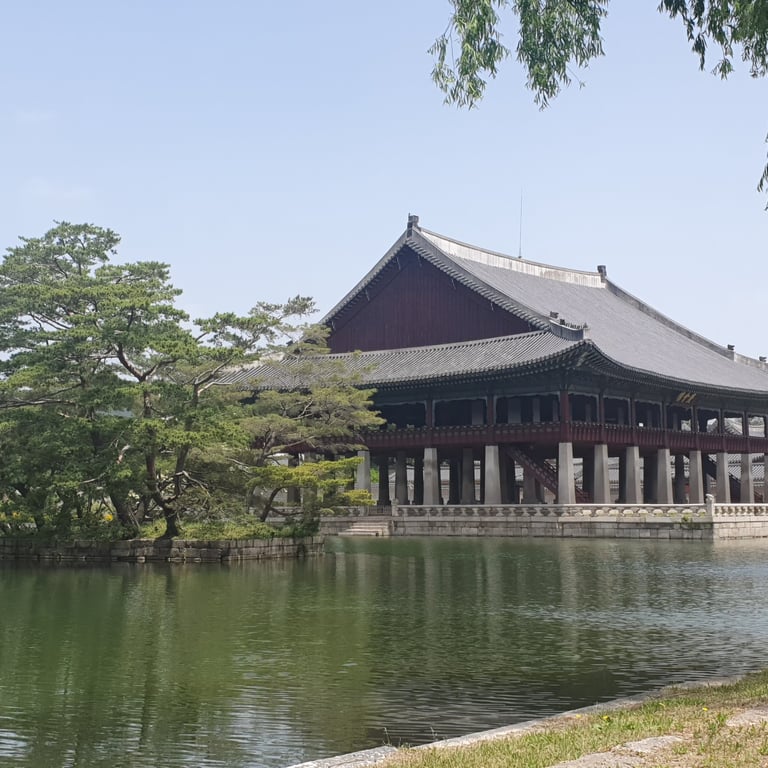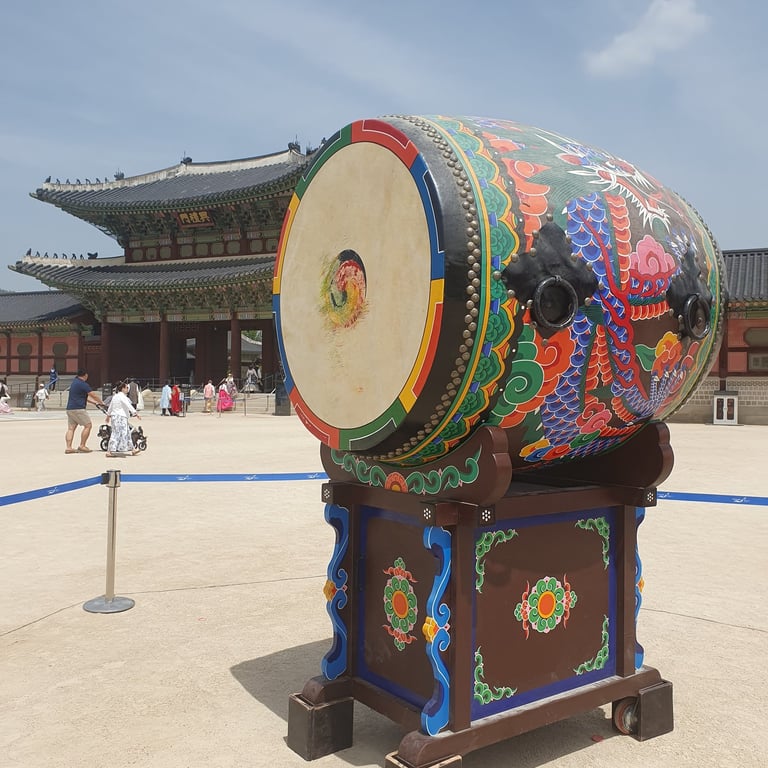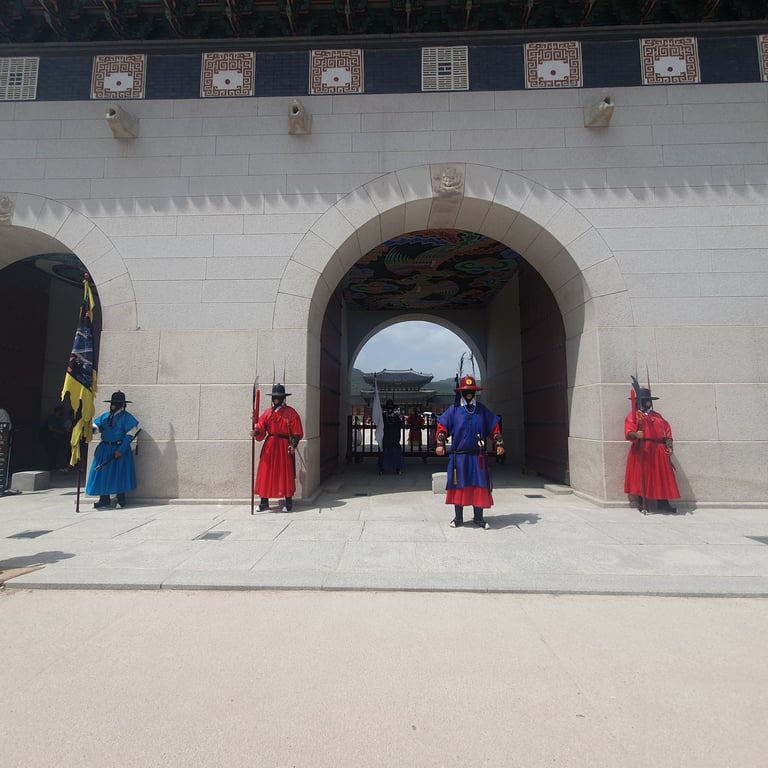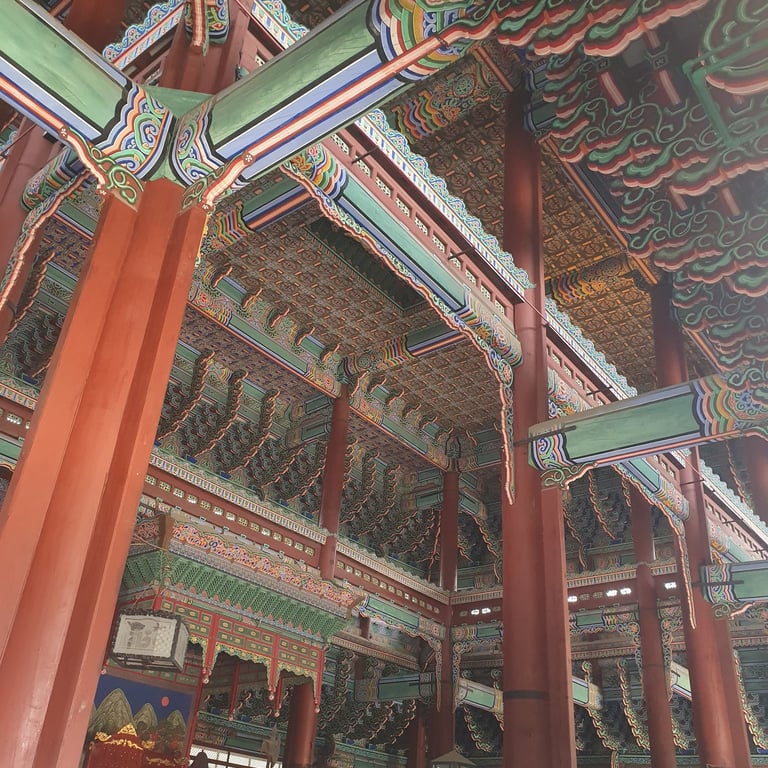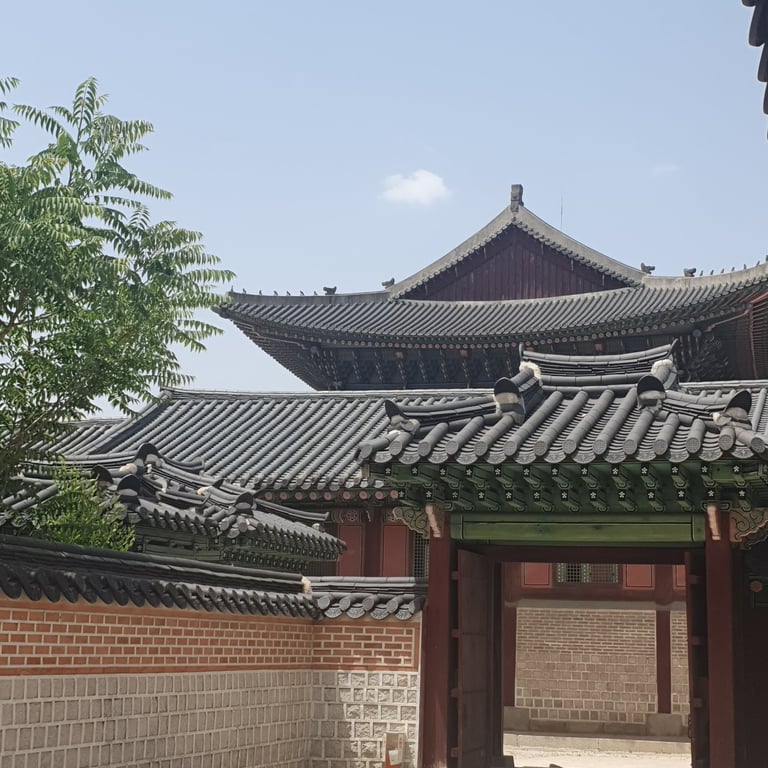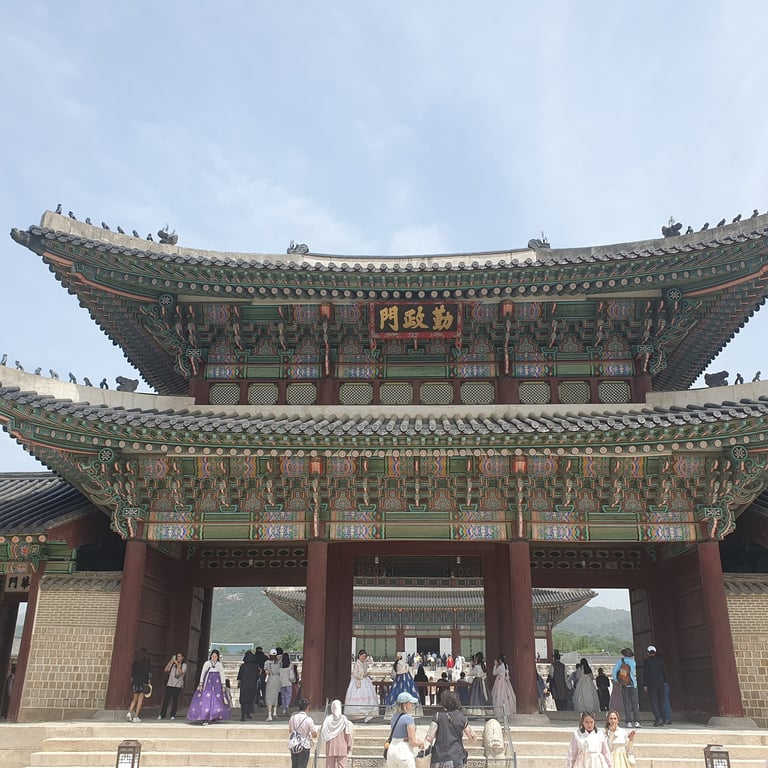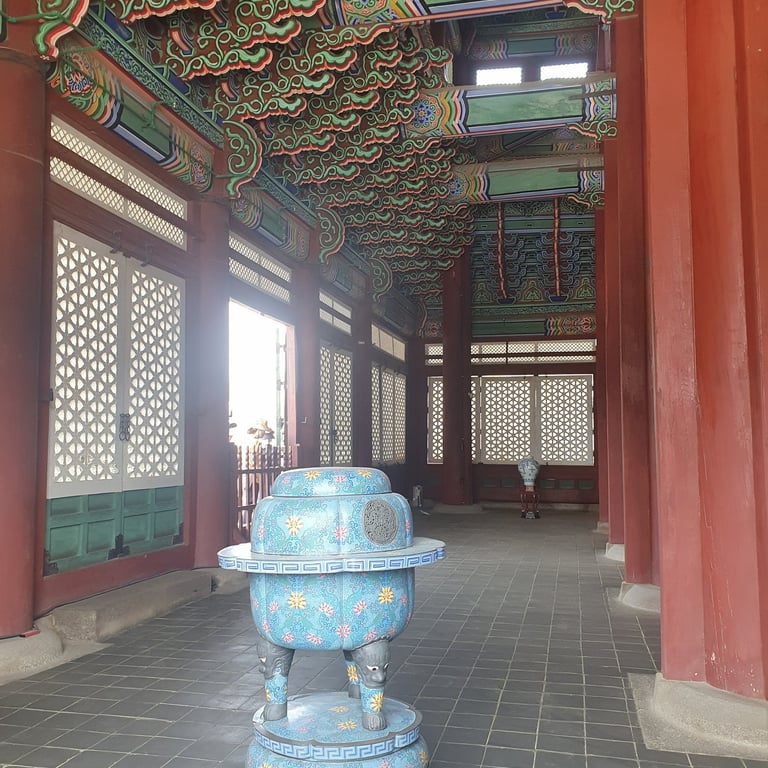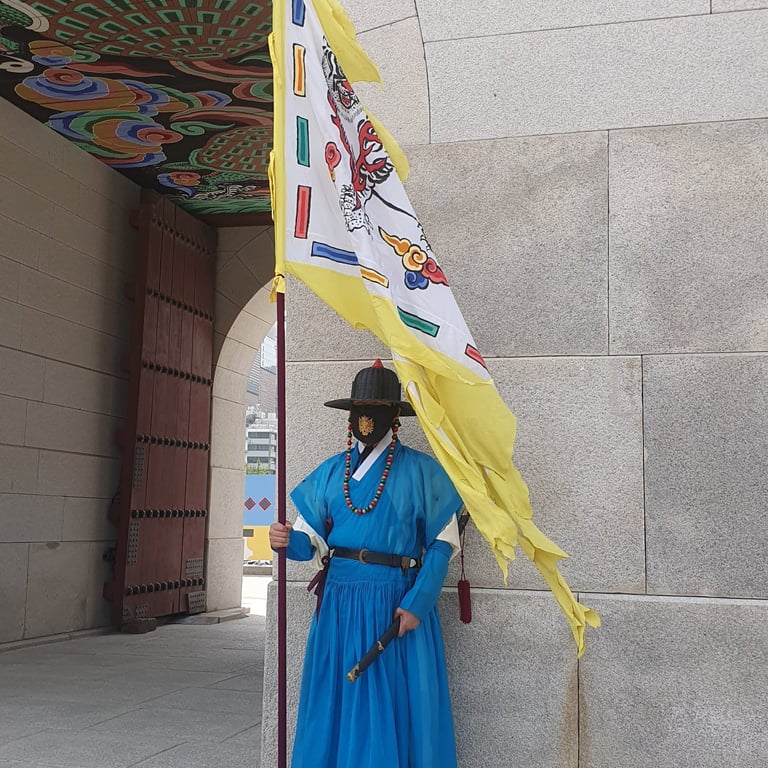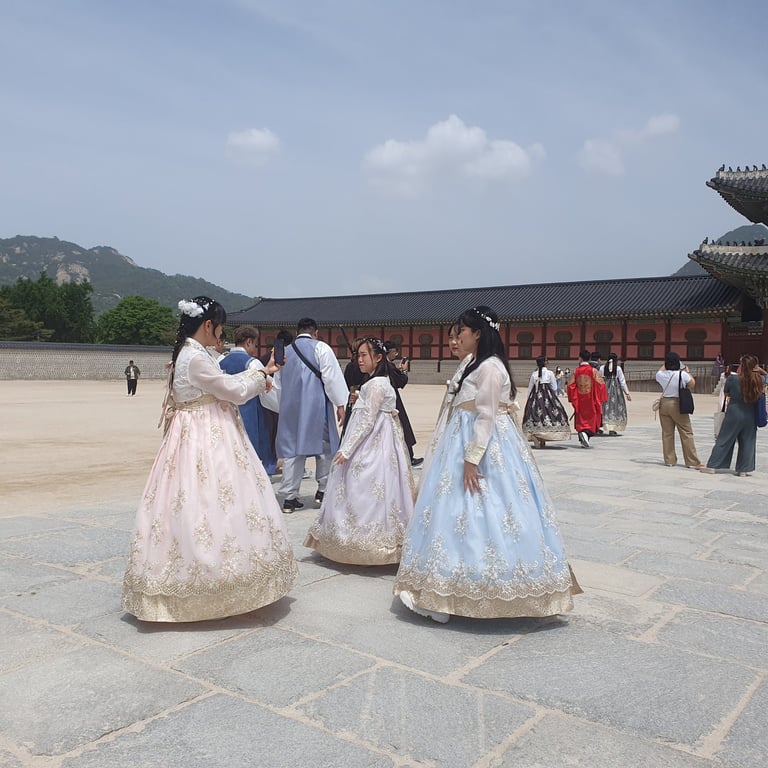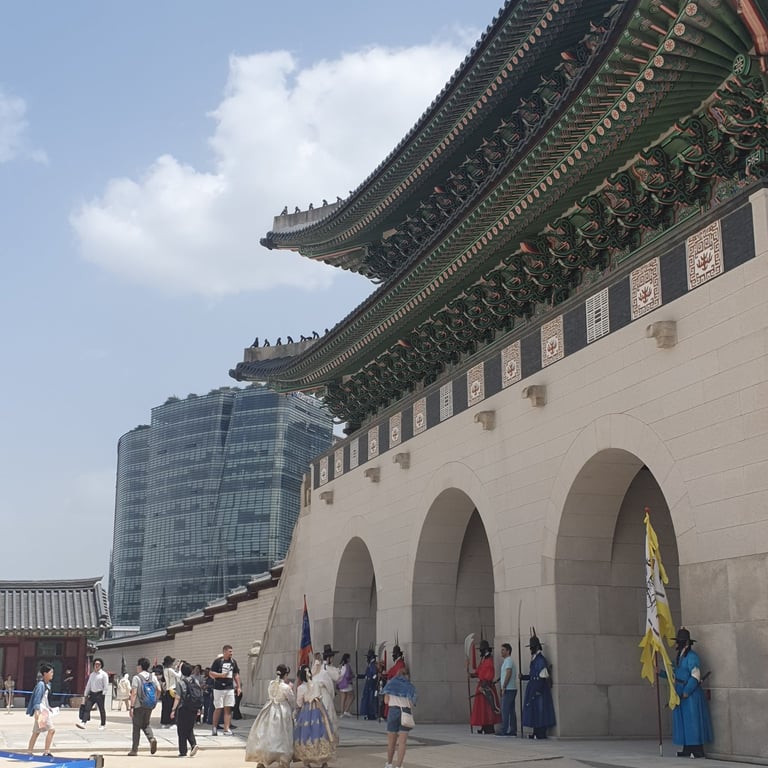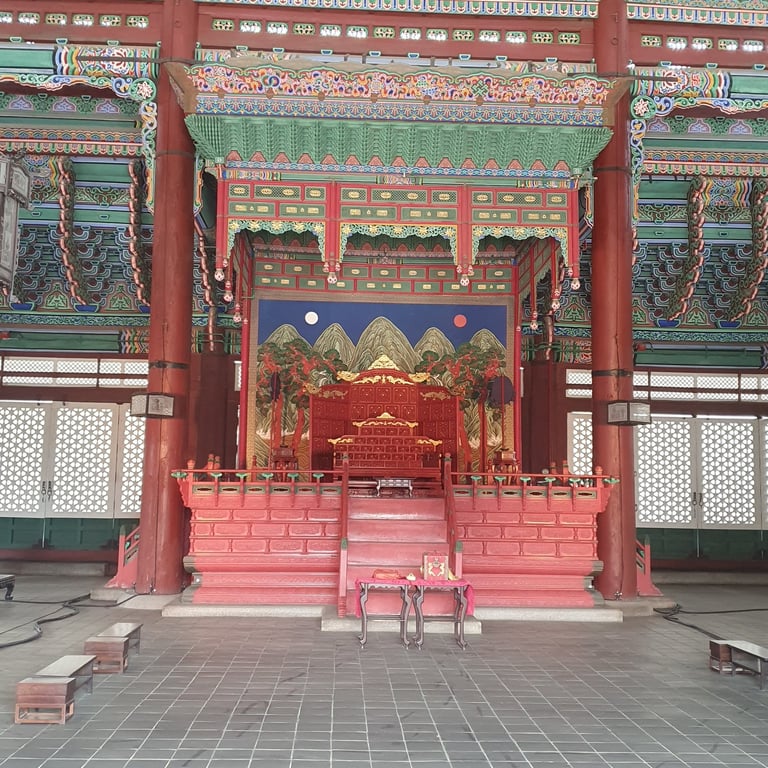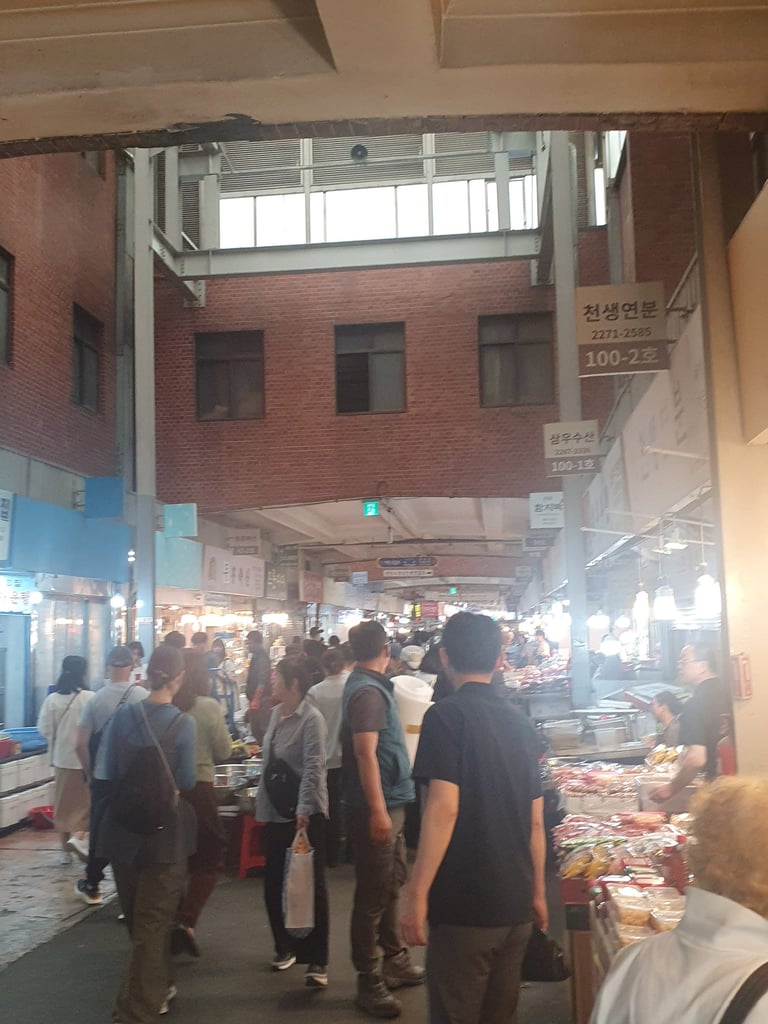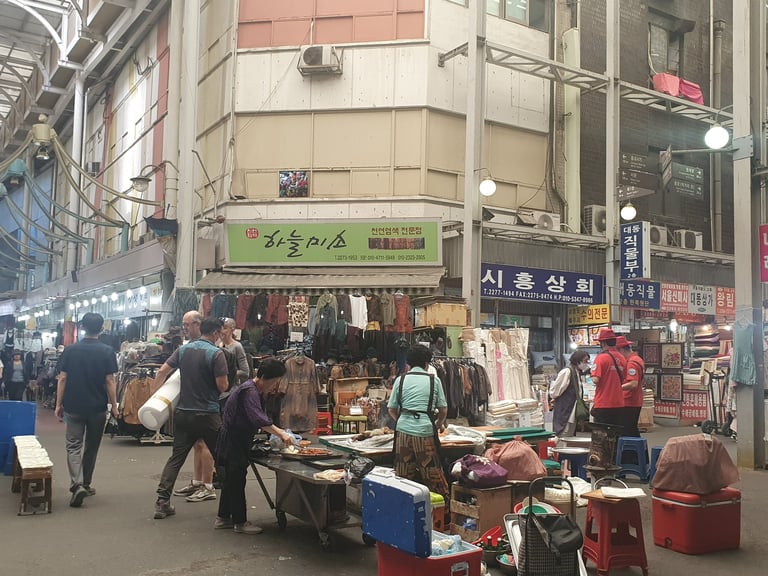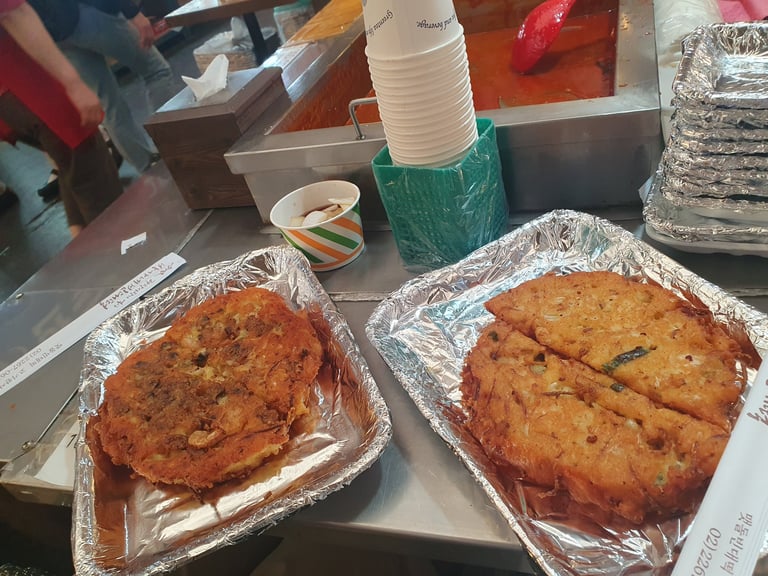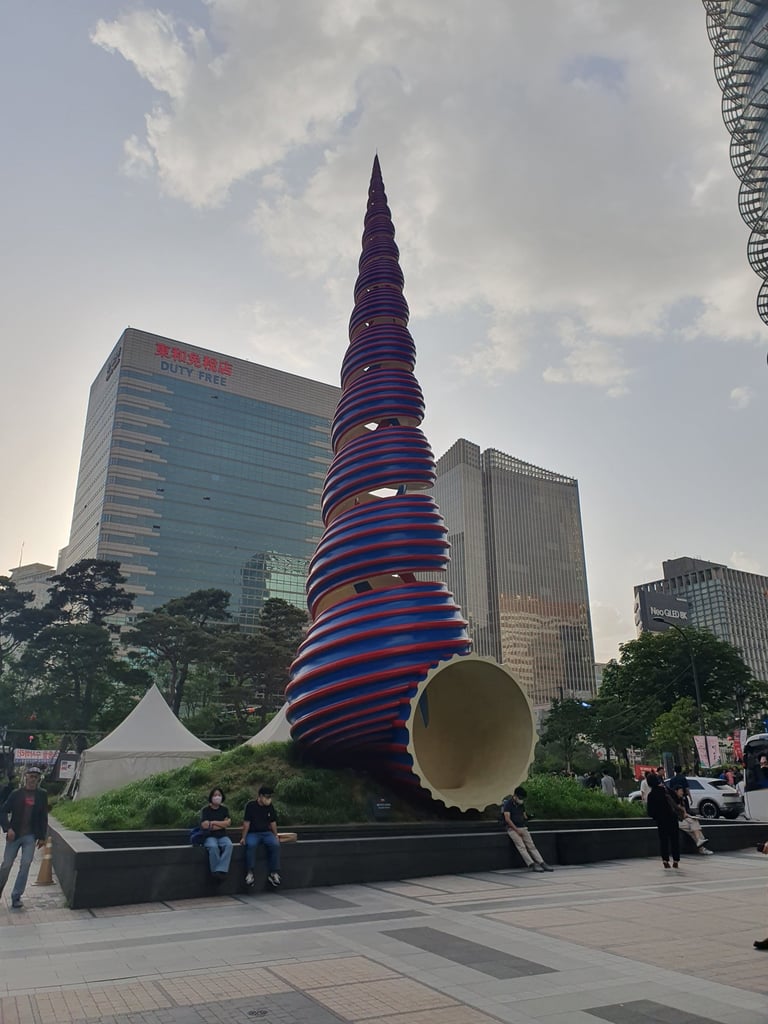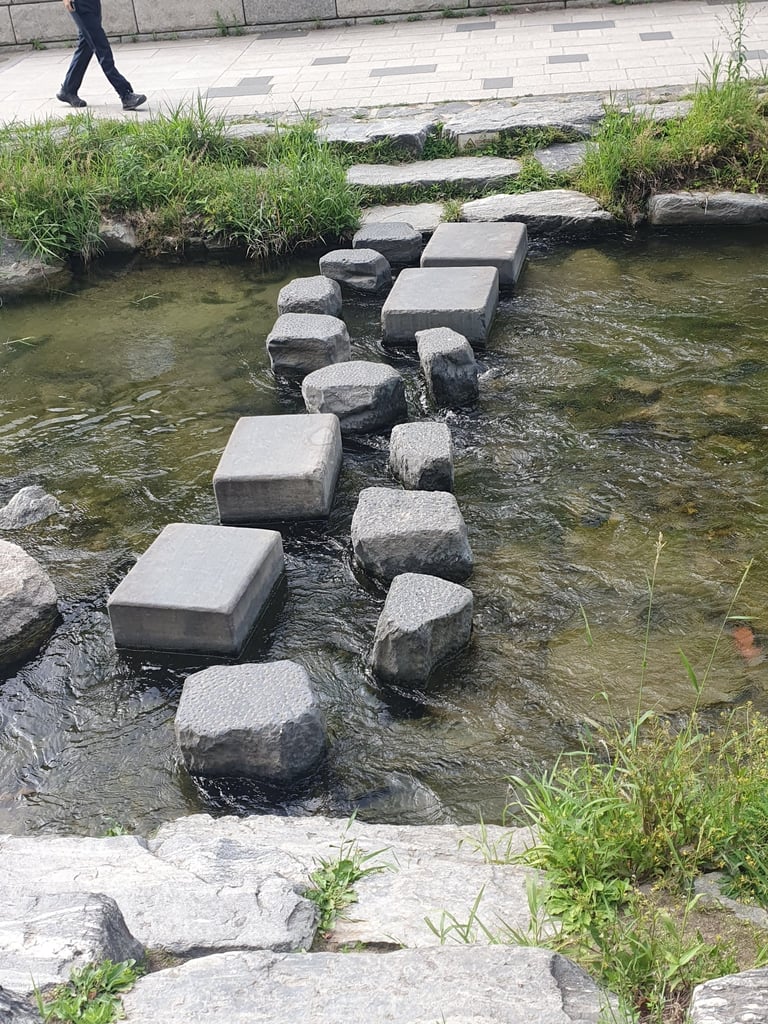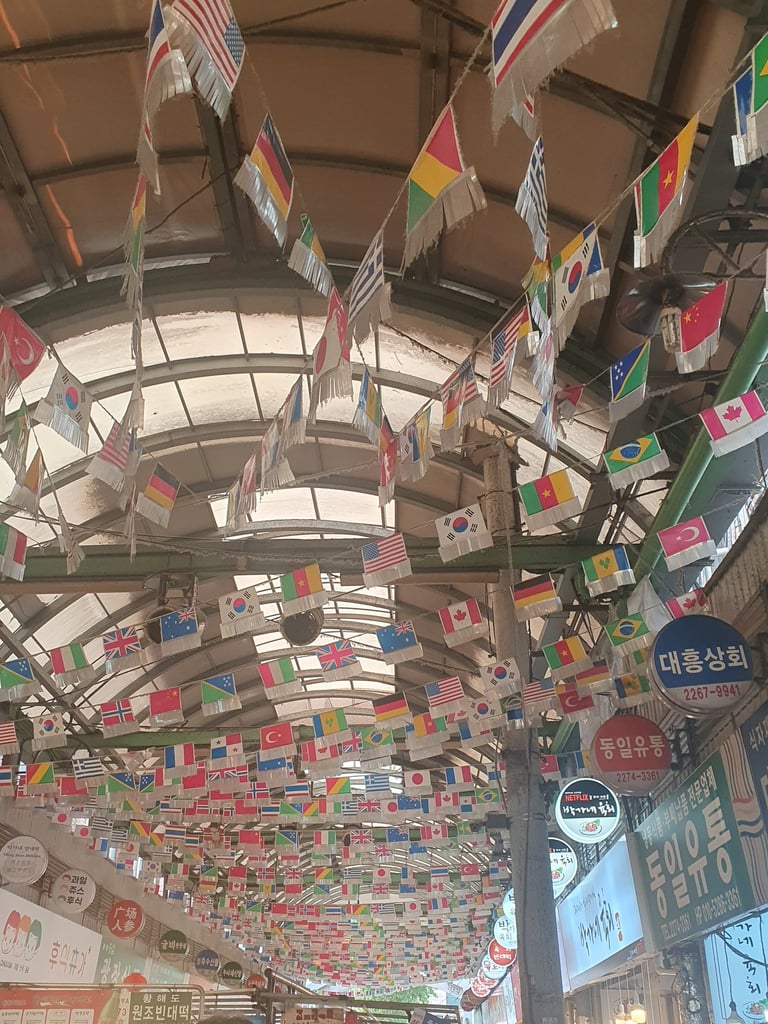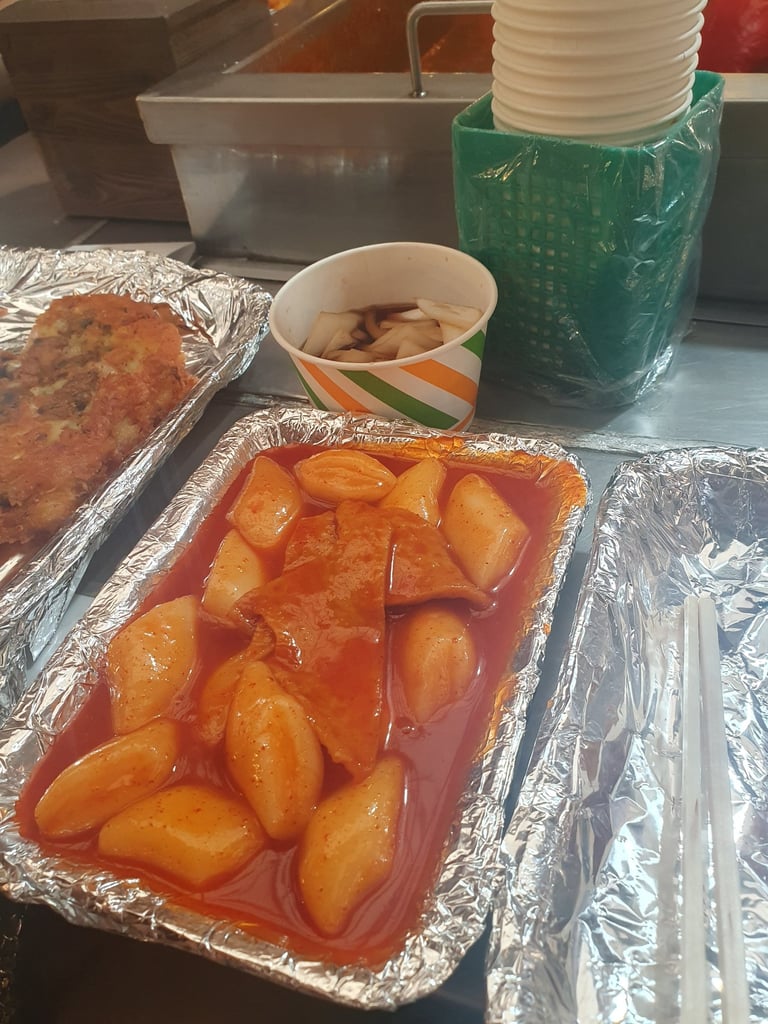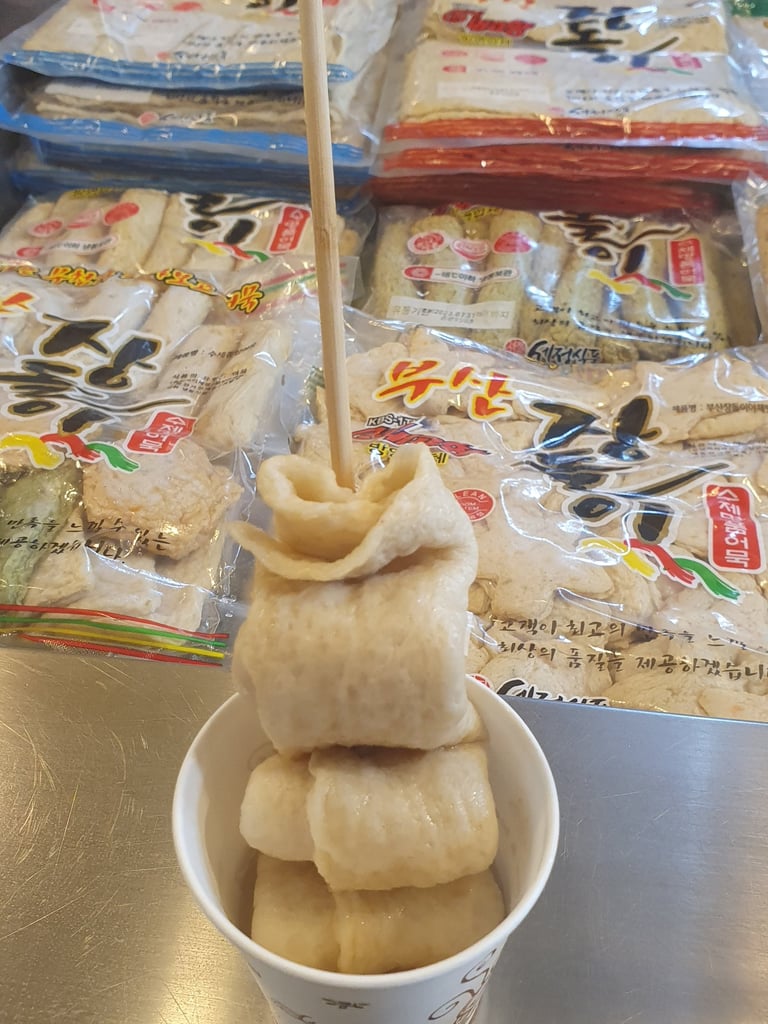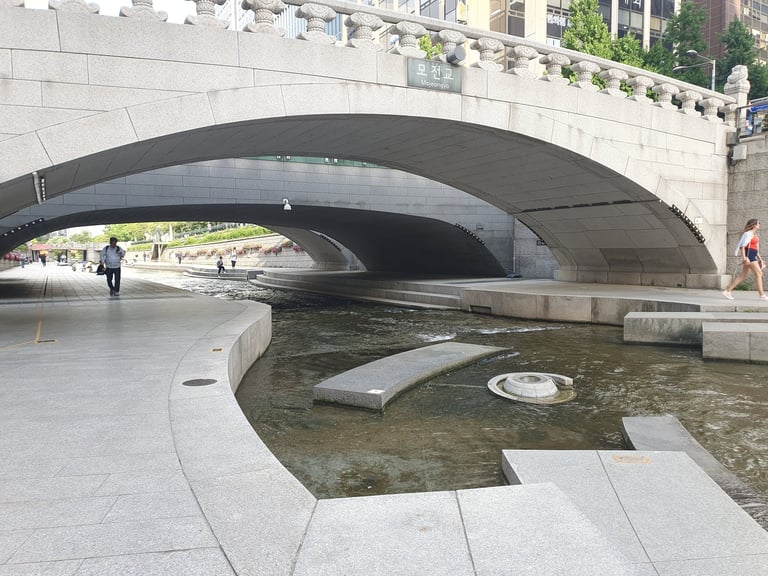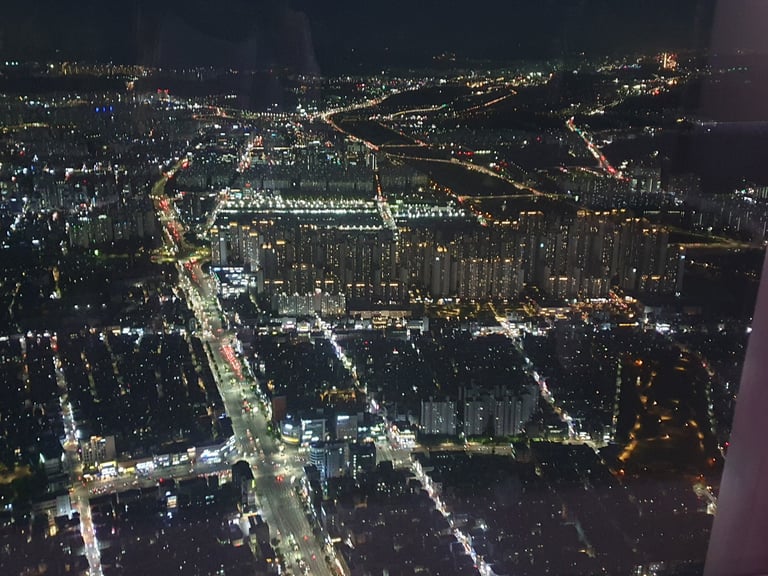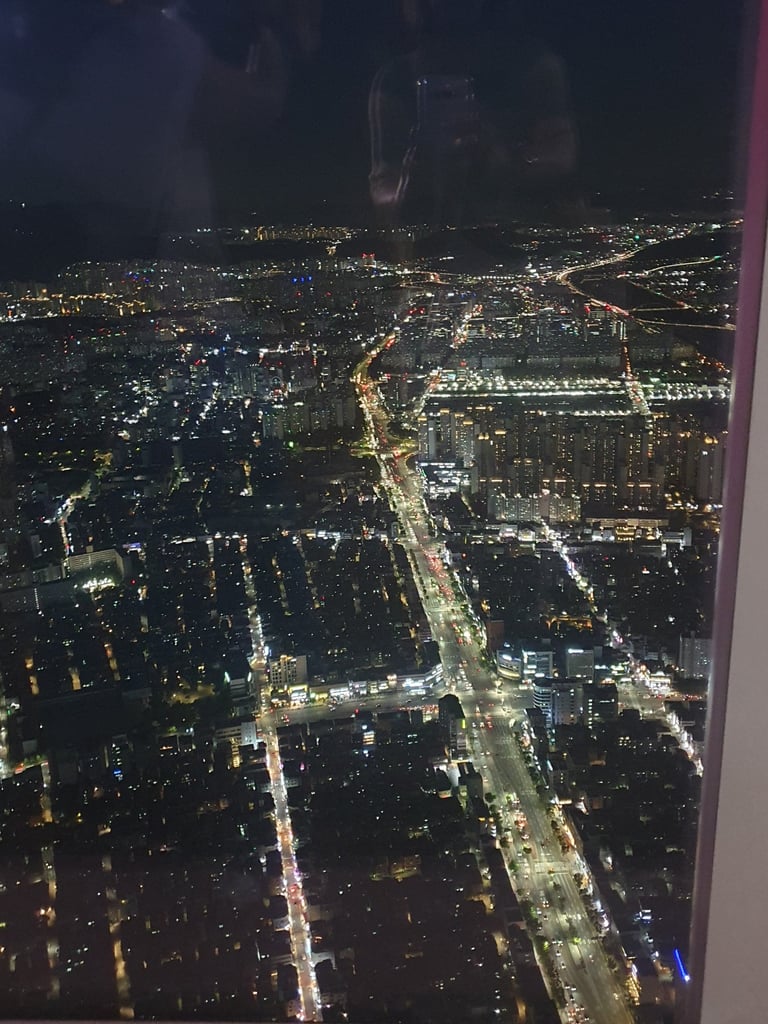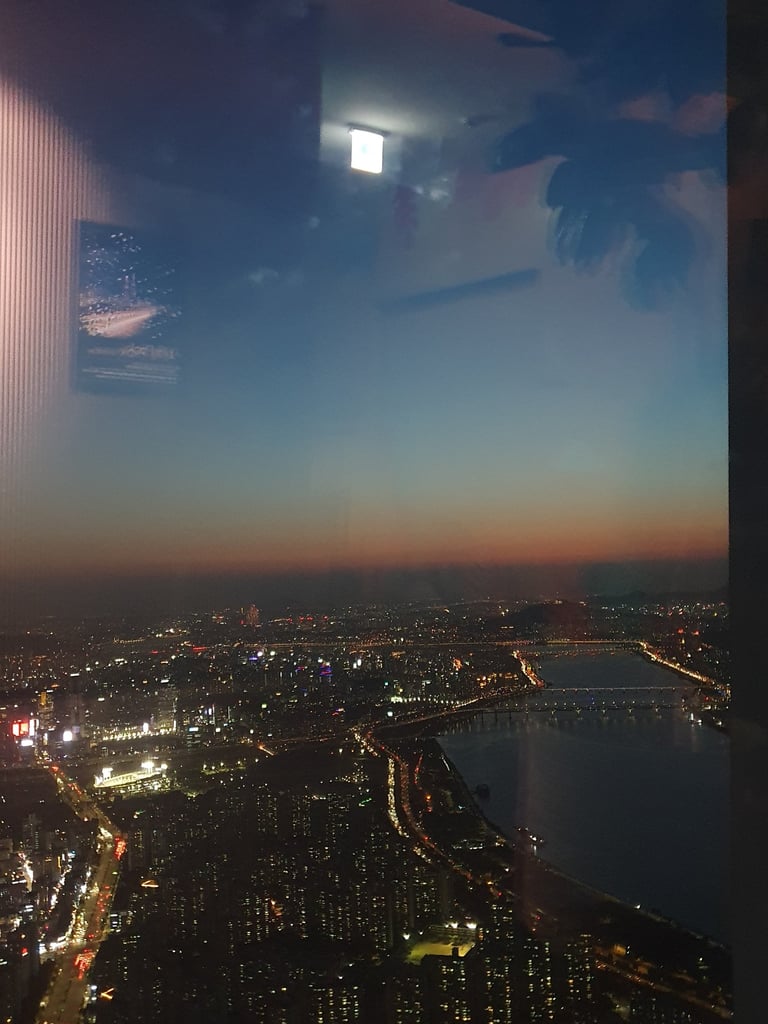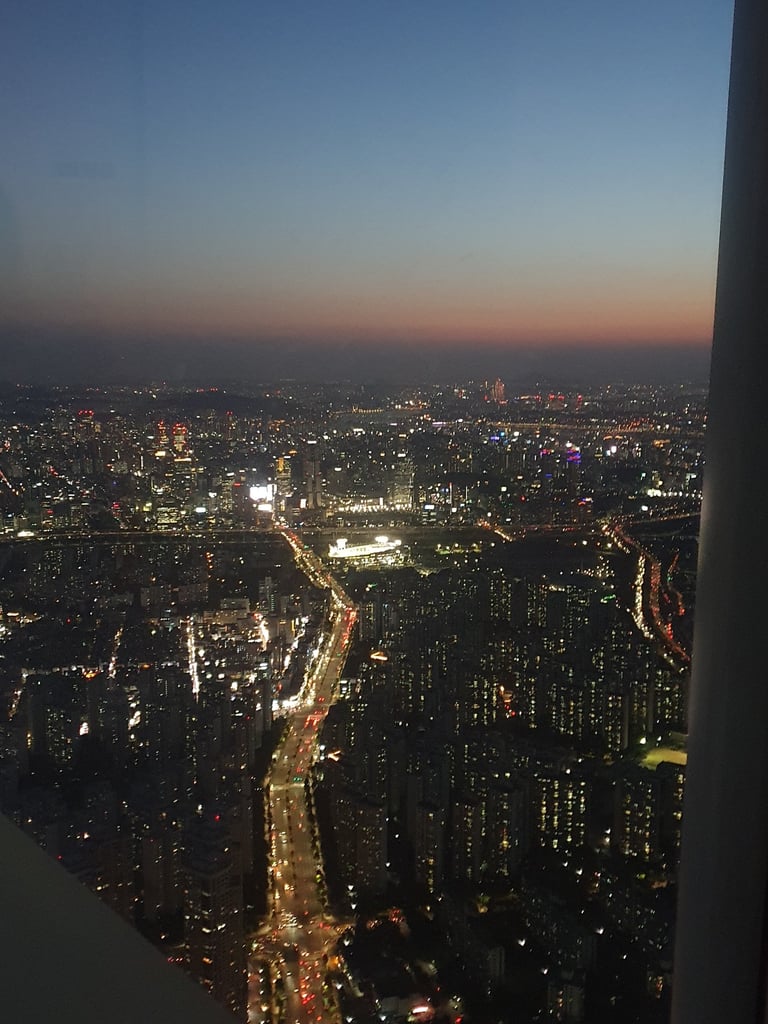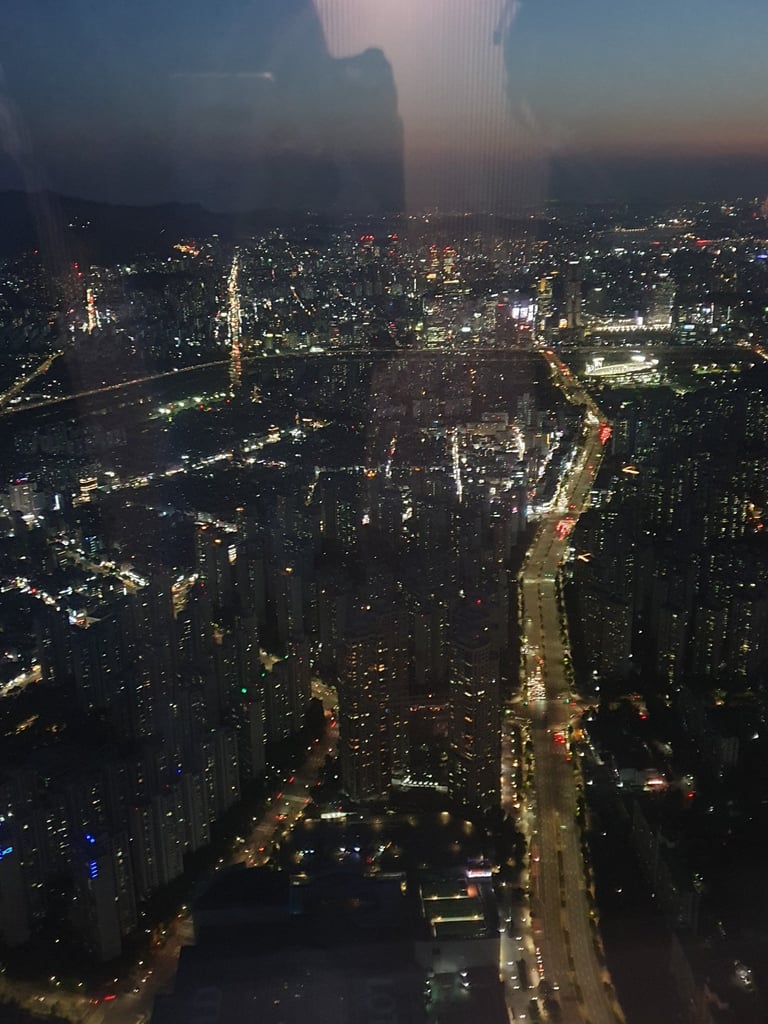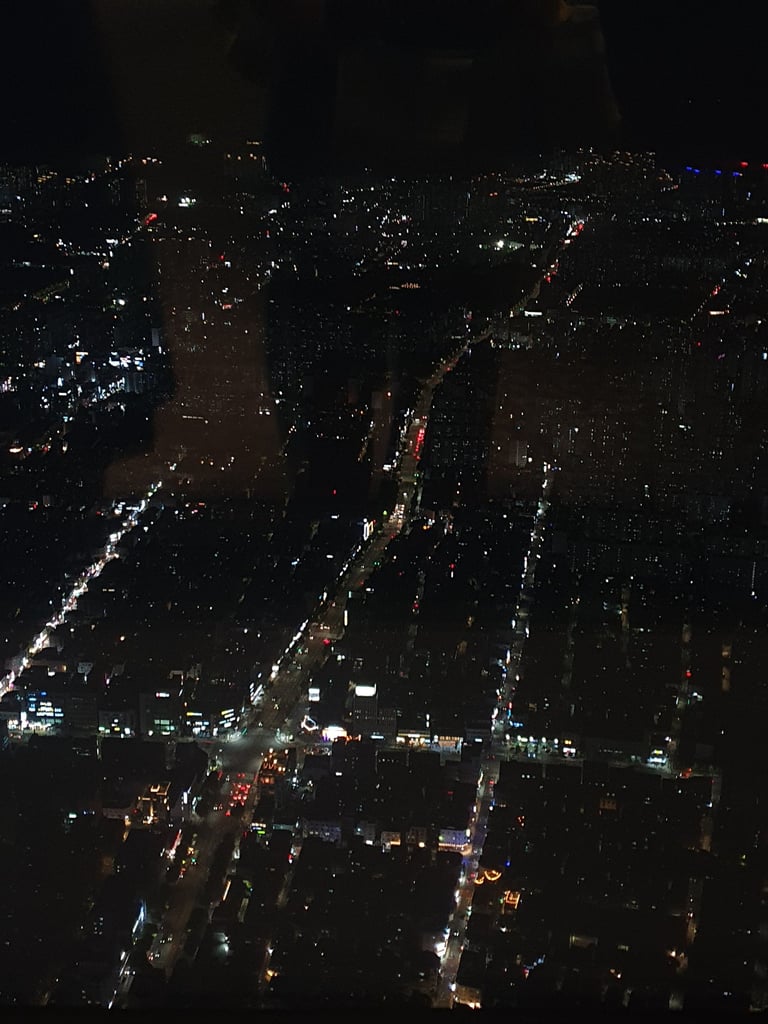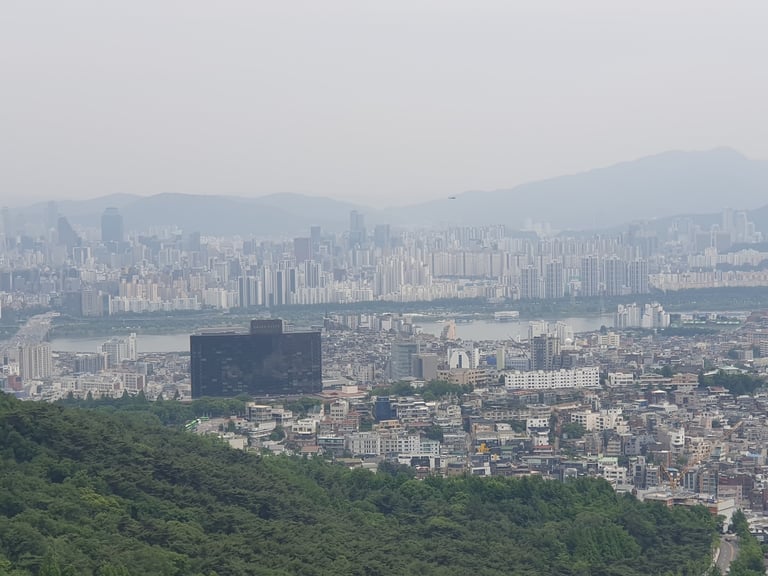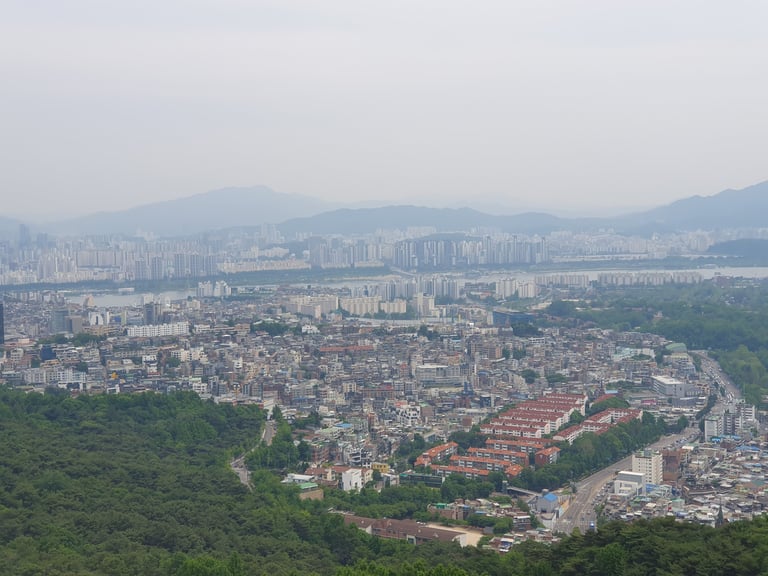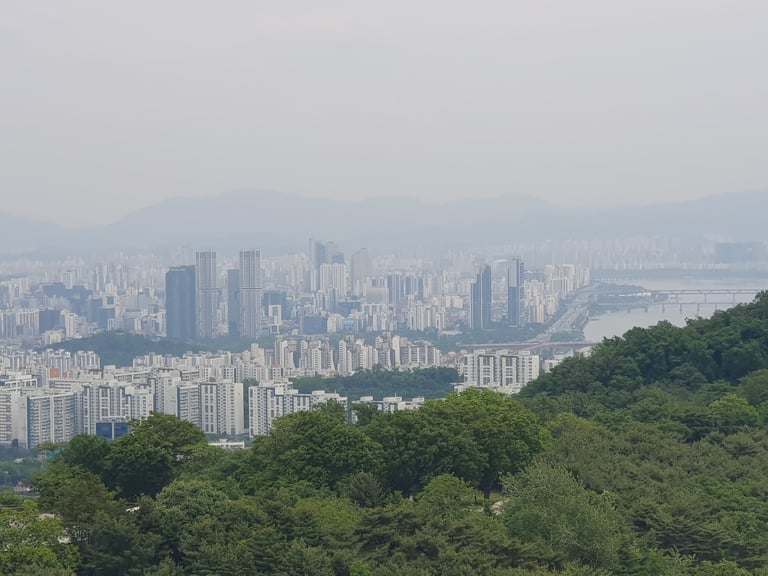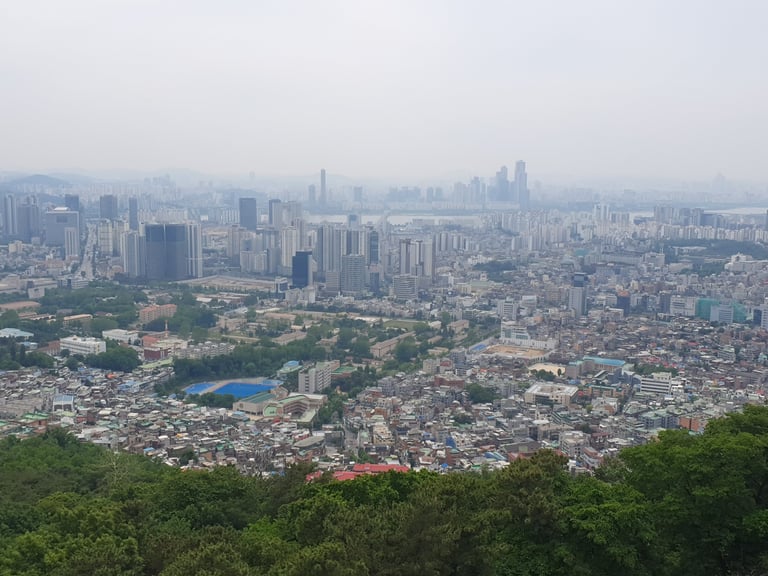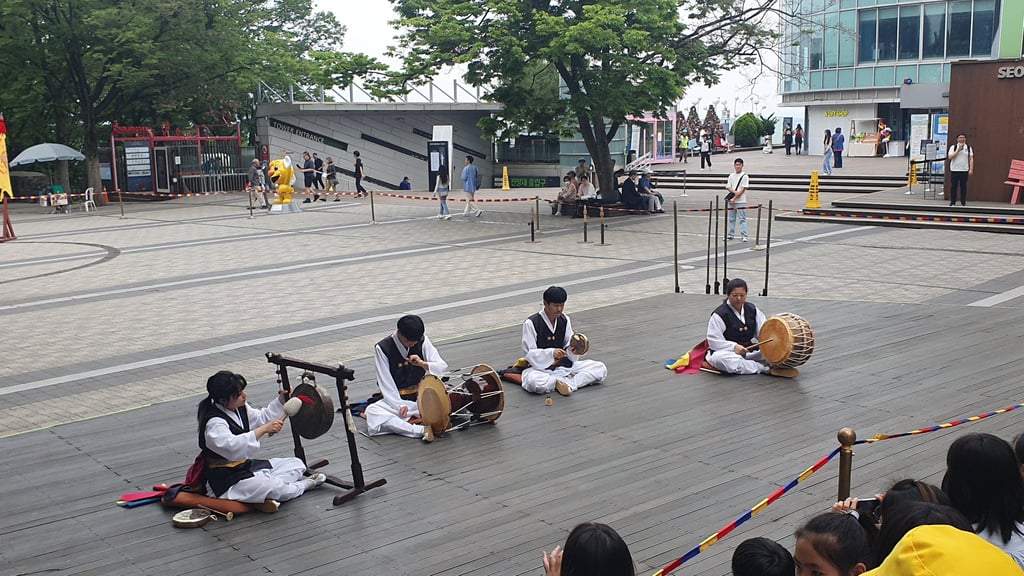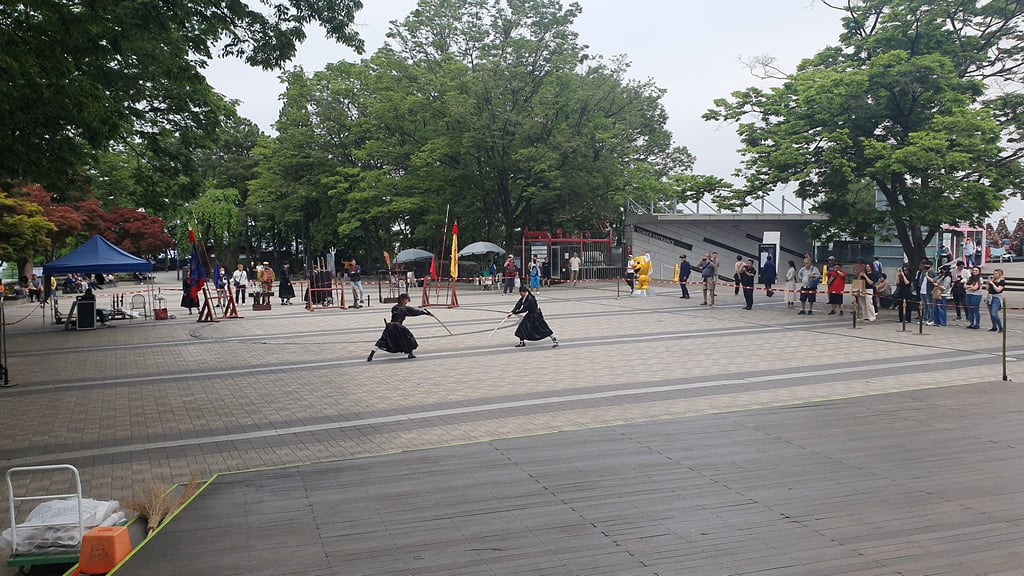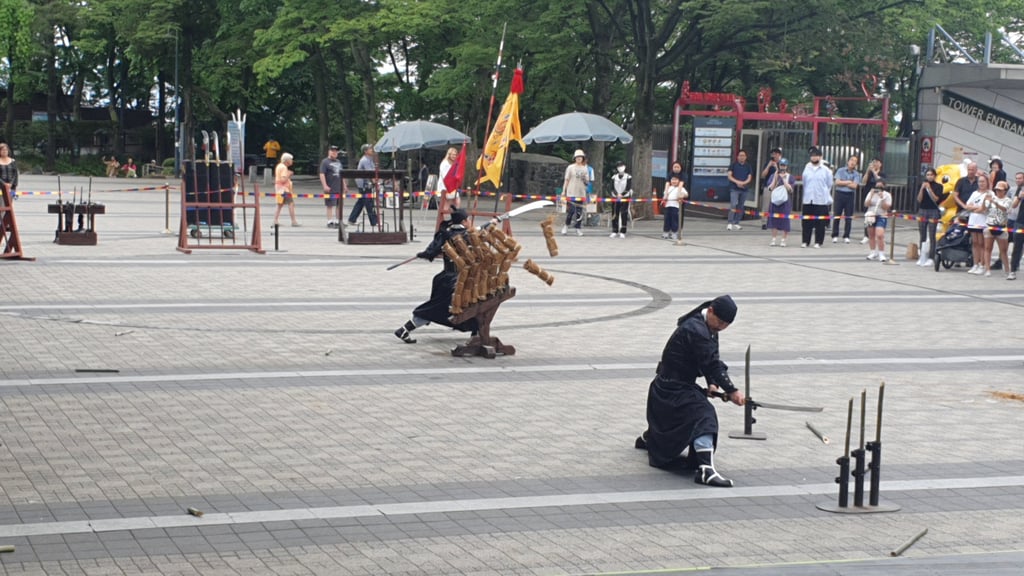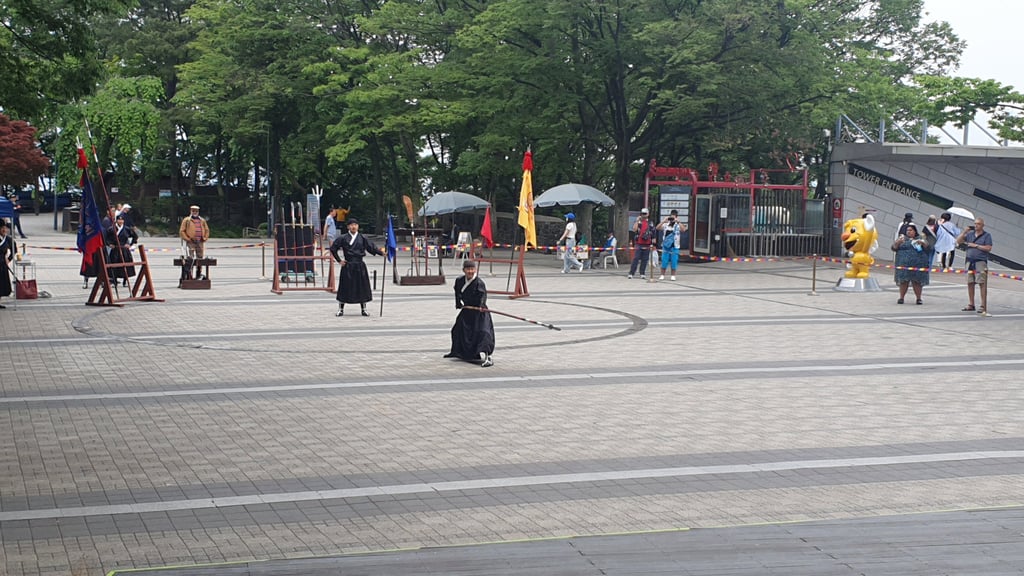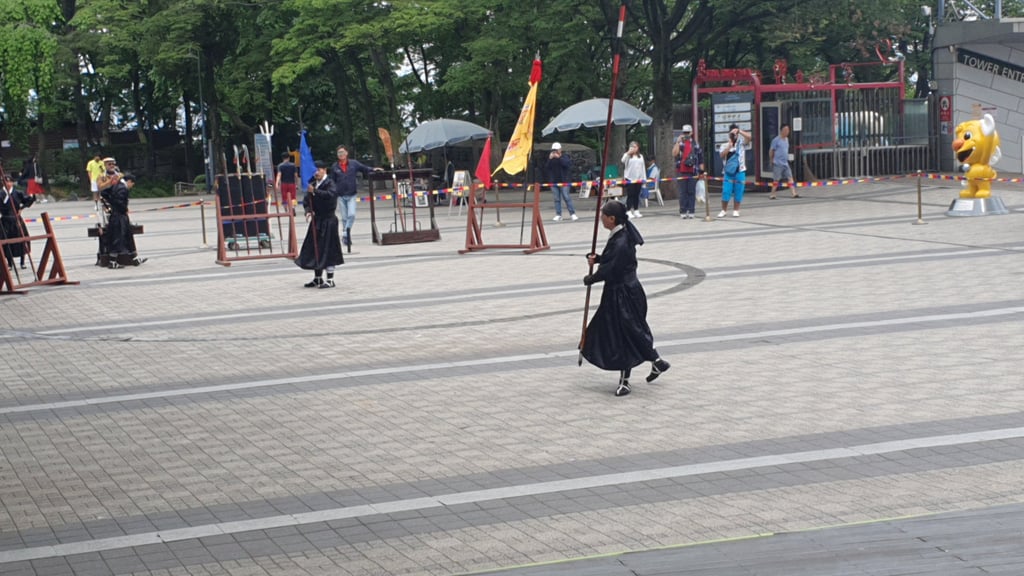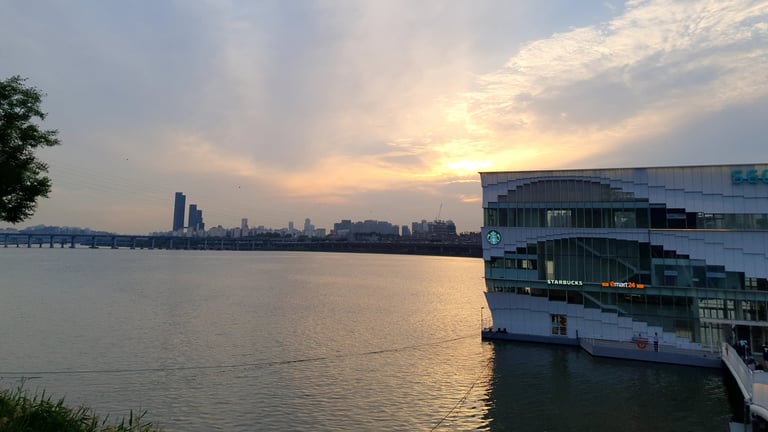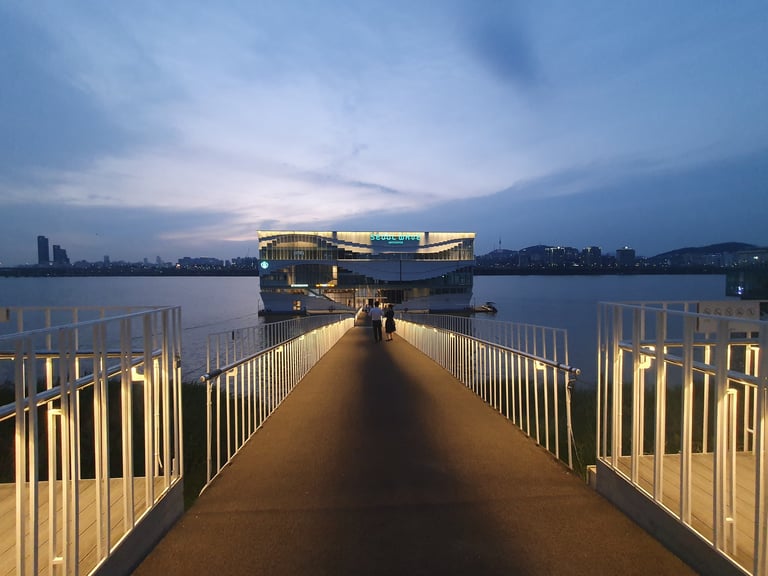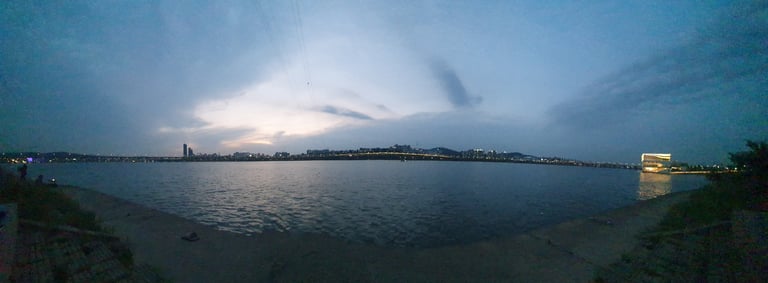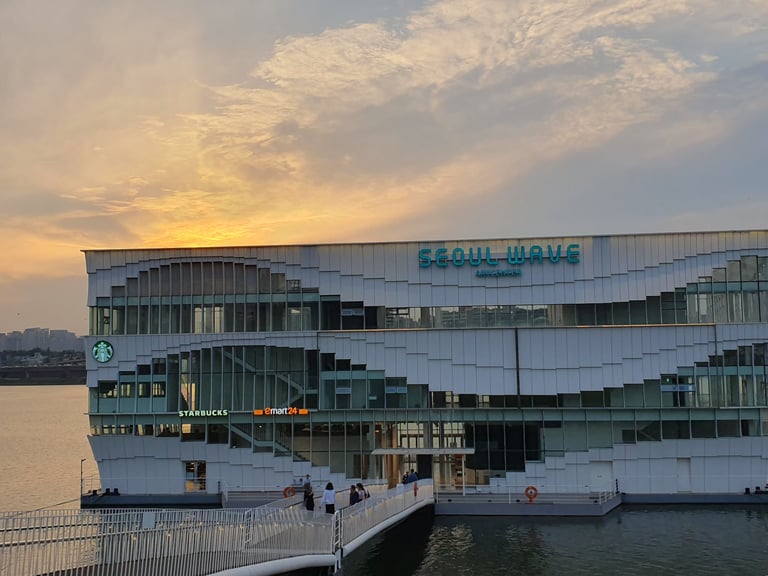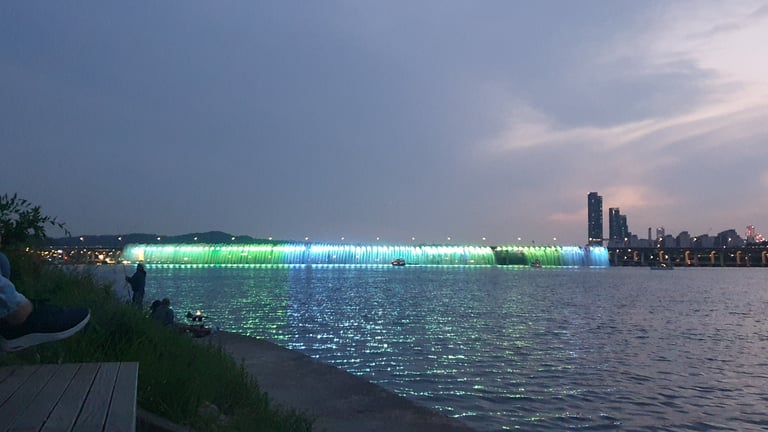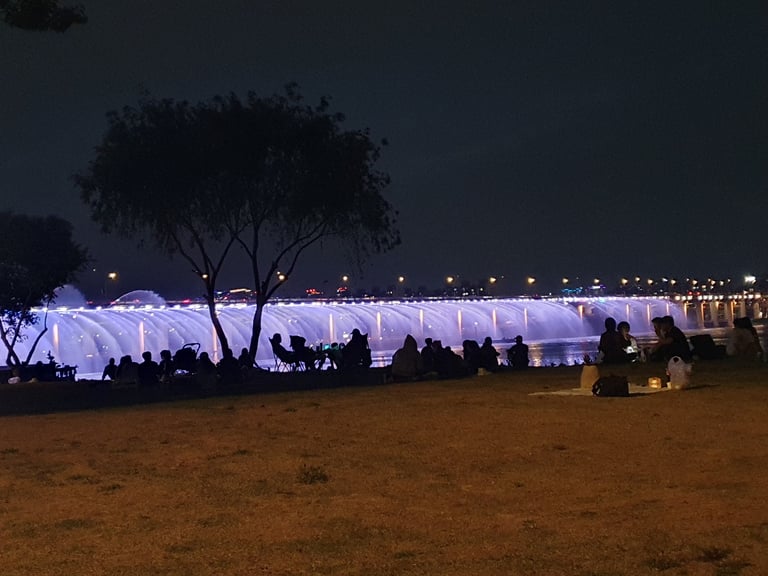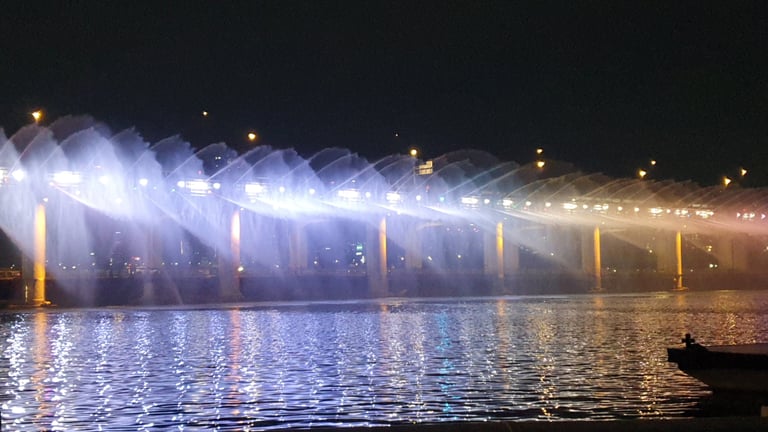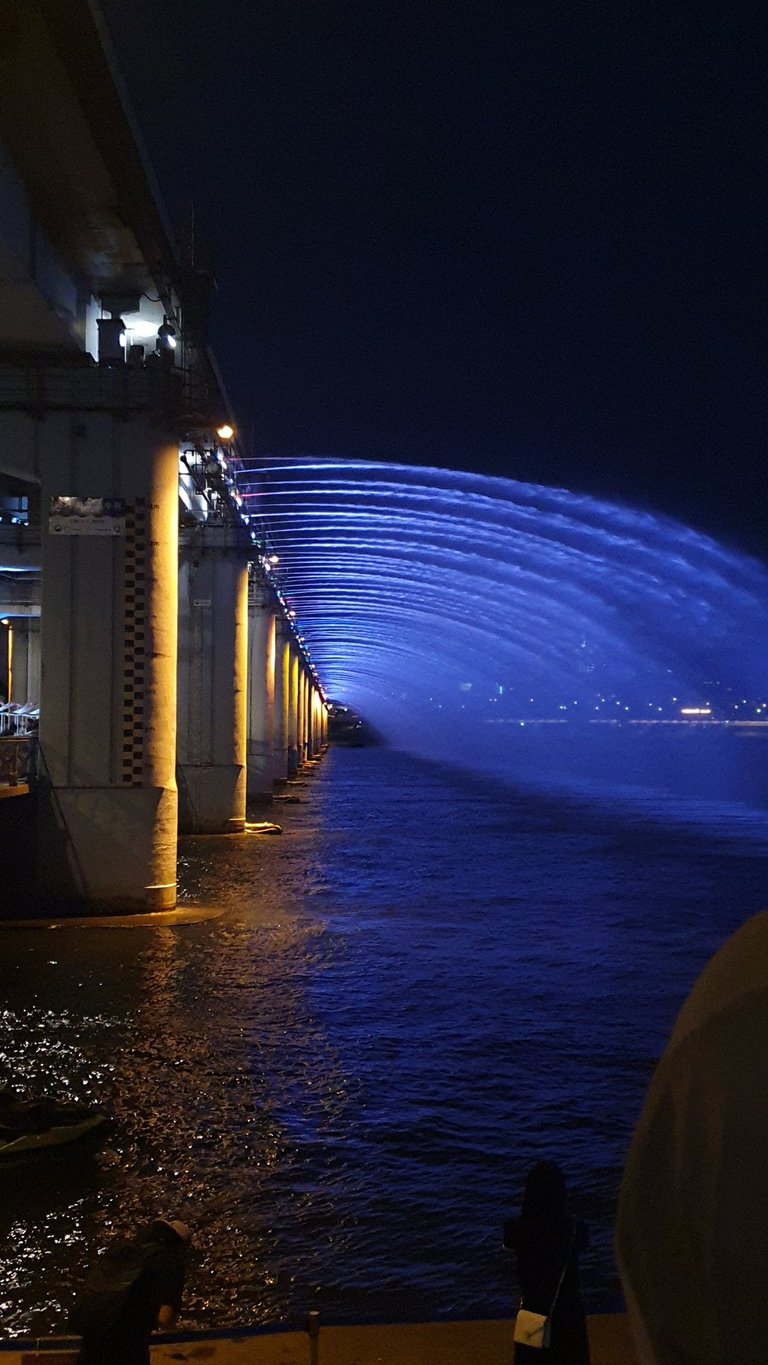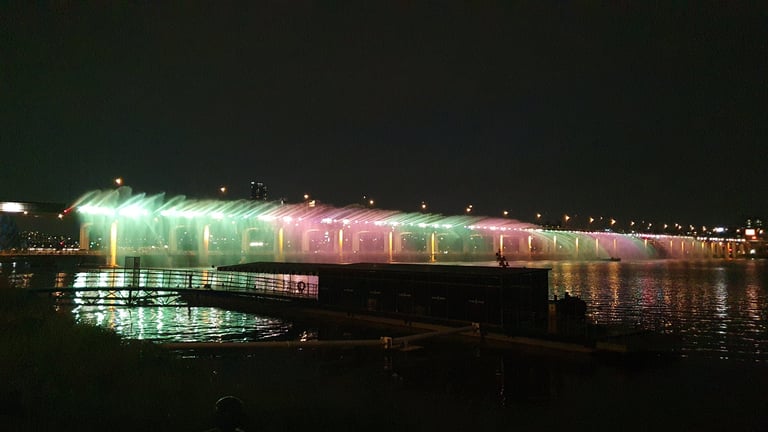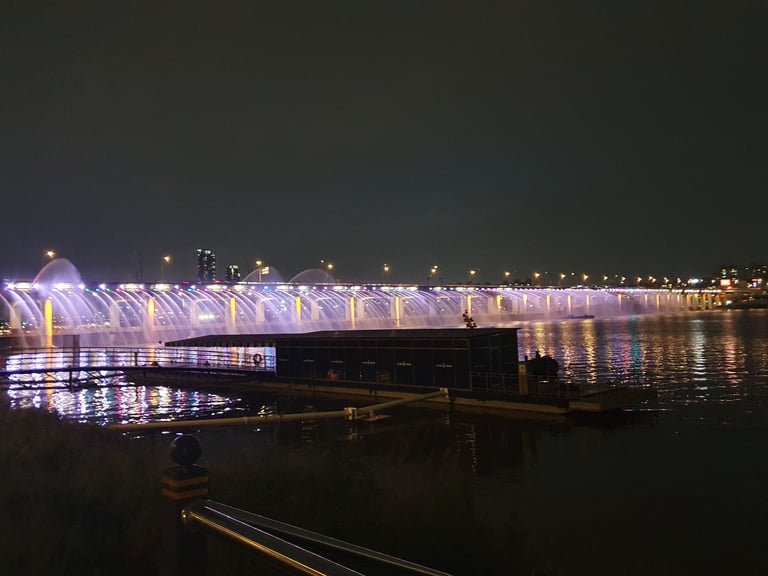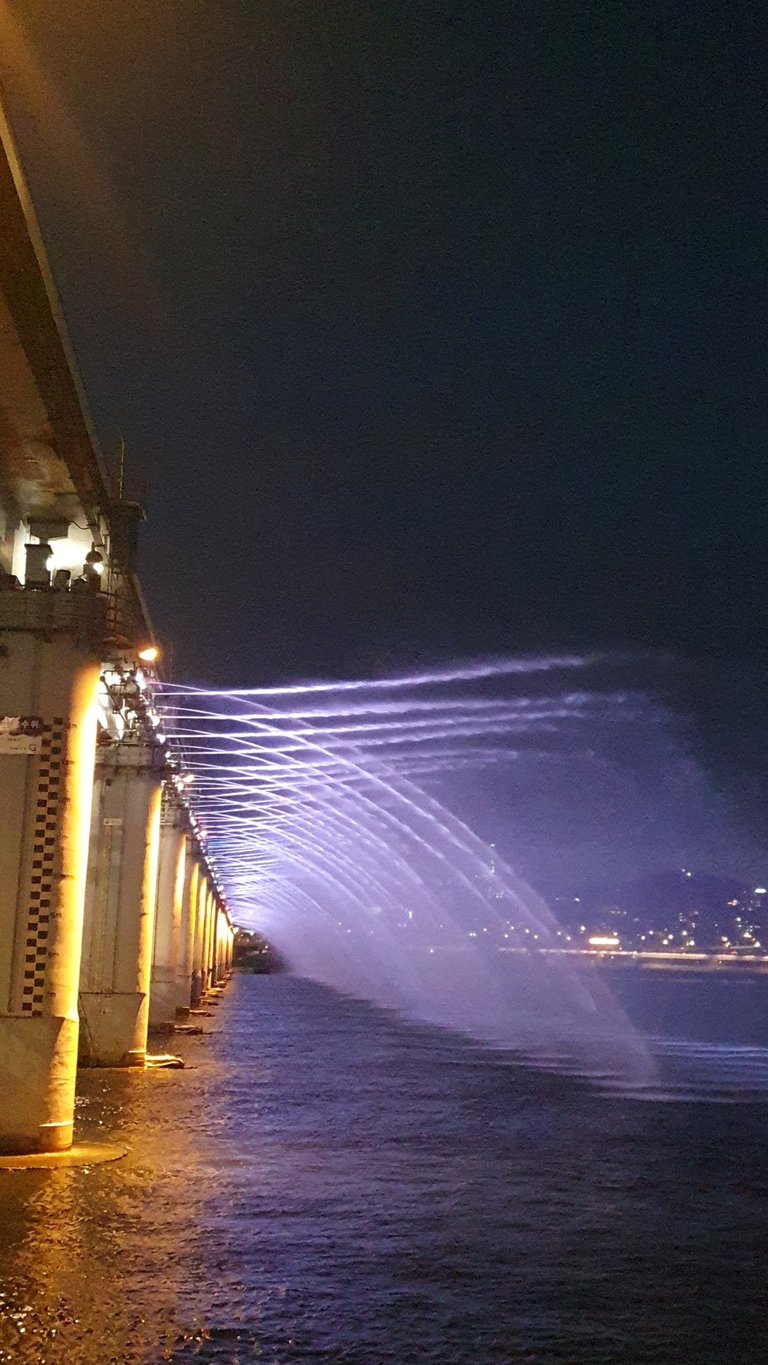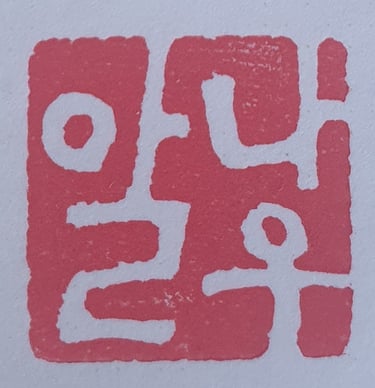Seoul
Upon our arrival, we took the time to explore the area around our accommodation. To our great surprise, we were about a 20-minute walk from Gwanghwamun Square.
We decided to walk the distance between our hotel and the famous square. Much to our amazement, we realized that we were staying just a few hundred meters away from the "Blue House," the presidential palace, which is currently unoccupied by the current leader.
Once we arrived at Gwanghwamun Square, we noticed that our stay coincided with the celebrations organized for Buddha's birthday. Many giant lanterns were on display in the square.
Just a few blocks away, we noticed a crowd gathered around a street concert. Indeed, a stage had been set up with a monk-DJ at the turntables. With energetic music, the crowd sang songs in honor of Buddha.
On the same esplanade, a more traditional parade was also taking place.
Discovering Gyeongbokgung Palace: The Jewel of Seoul
Welcome to Seoul, the bustling capital of South Korea, where the ancient and the modern coexist. At the heart of this vibrant metropolis lies a historical treasure: Gyeongbokgung Palace. This magnificent palace, a true gem of Korean architecture, is a must-visit destination.
Built in 1395 during the Joseon Dynasty, Gyeongbokgung is the largest of Seoul's five grand palaces. Its name means "Palace of Shining Happiness." Though destroyed by the Japanese in the 16th century, it has been beautifully restored over the years, allowing us to marvel at its former glory today.
Each day, Gyeongbokgung Palace comes alive with the changing of the guard ceremony. Rent a hanbok (traditional Korean attire) from a nearby shop and take a step back in time as you stroll through the royal courtyards like a noble of the past.
Visiting Gyeongbokgung is like diving into Korea’s rich and fascinating history. It’s also a peaceful escape from the hustle and bustle of the modern city. Whether you’re a history enthusiast, a photography lover, or simply a curious traveler, Gyeongbokgung Palace has something special to offer everyone.
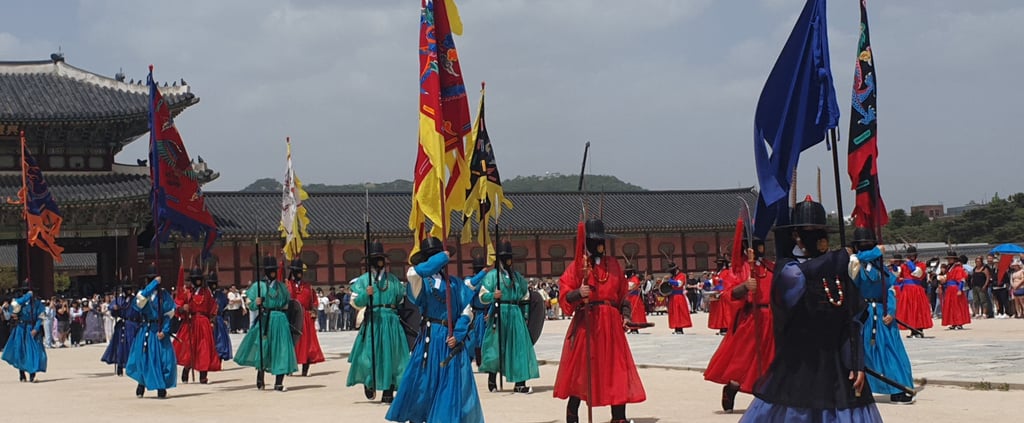

Welcome to Gwangjang Market
Welcome to Gwangjang Market in Seoul, where culinary dreams come true and your taste buds embark on a delightful vacation. Get ready for an experience that teases your senses, excites your taste buds, and makes your stomach dance with joy.
As soon as you step through the doors of Gwangjang Market, you're greeted by a symphony of enticing sounds and captivating aromas. But be careful, you might get distracted before you even begin if you don’t stop at the eomuk stalls. These delicious fish cakes on skewers are best enjoyed with their flavorful broth.
Try not to drool while gazing at the giant, perfectly golden vegetable pancakes, or the spicy tteokbokki. The vendors, true spatula virtuosos, flip them with a skill that would make a Michelin chef blush. And the best part? You can savor a piece for an incredibly affordable price!
The COEX Mall, located in Seoul's Gangnam district, is one of South Korea's largest and most popular shopping complexes. Opened in 2000, this center is part of the COEX Convention & Exhibition Center, a vast complex that includes event spaces, hotels, and offices.
The COEX Mall, located in Gangnam, Seoul, is a vast shopping and entertainment complex opened in 2000. It features numerous stores, restaurants, and attractions such as the impressive Starfield Library, a must-visit landmark, as well as a cinema, an aquarium, and regular cultural exhibitions. Its giant K-Pop Square screen, installed in 2018, is one of Seoul’s most spectacular digital displays, showcasing 3D animations and major Korean brand advertisements.
Singer Psy gained worldwide fame in 2012 with Gangnam Style, a hit song known for its catchy beat and humorous dance moves. The music video became the first to reach one billion views on YouTube, bringing K-pop to a global audience.
The Seoul Olympic Stadium, built for the 1988 Olympics, is a symbol of Korea’s sports development. With a 69,000-seat capacity, it hosted the Olympic ceremonies and now serves as a venue for major sporting events and concerts.
Near the Lotte World Tower, the "Possibilities" sculpture by Jaehyo Lee symbolizes the connection between nature and modernity. Made of wood and metal, it invites contemplation within an urban setting.
Finally, the Lotte World Tower, inaugurated in 2016, is South Korea’s tallest skyscraper at 555 meters with 123 floors. This iconic landmark houses offices, luxury hotels, residences, and the Seoul Sky observatory, offering breathtaking panoramic views with a glass floor for a thrilling experience.
With its multi-purpose use and refined design, the Lotte World Tower is a must-see landmark for both residents and tourists (Images 8 and 9).
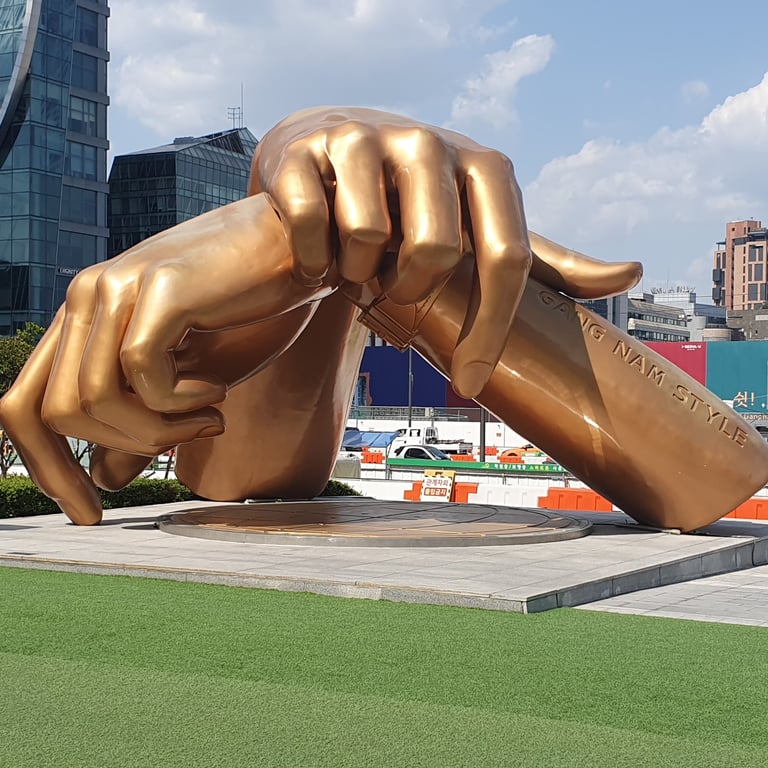
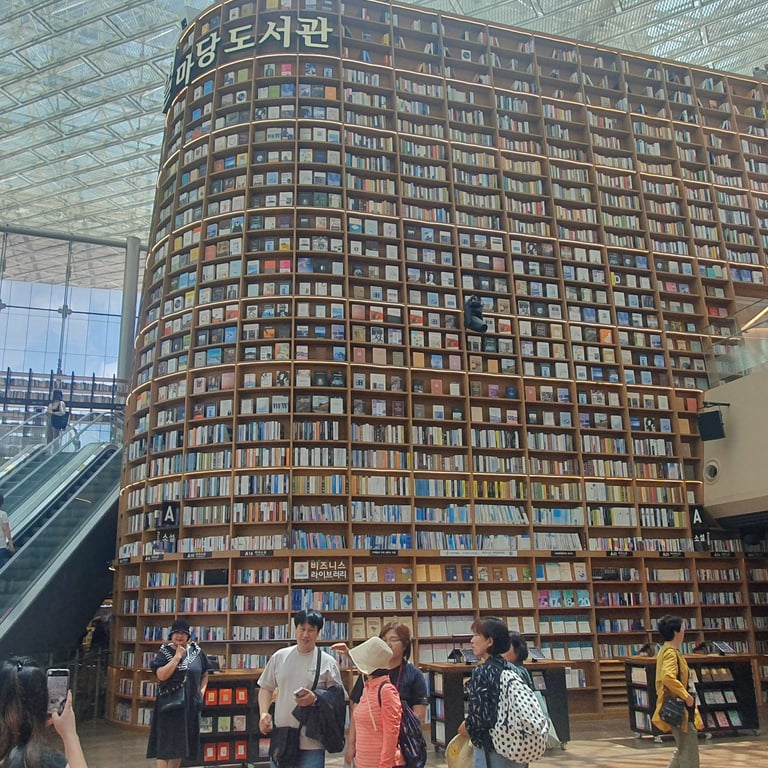
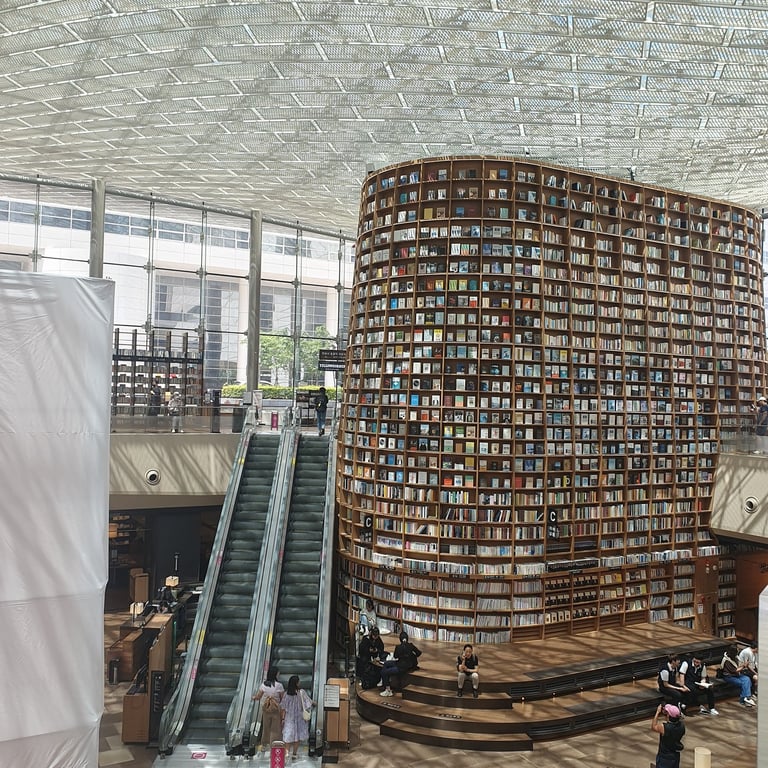
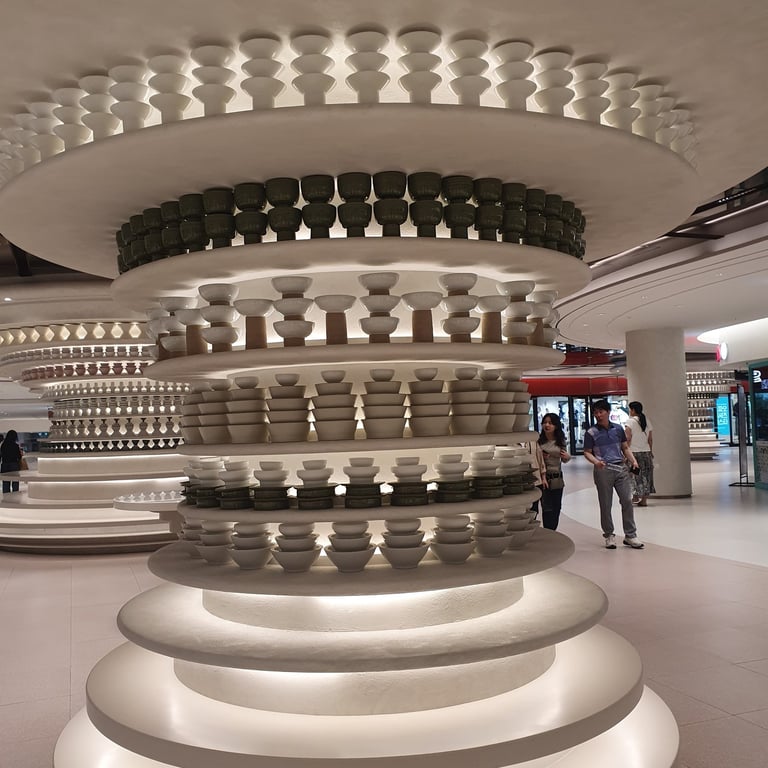
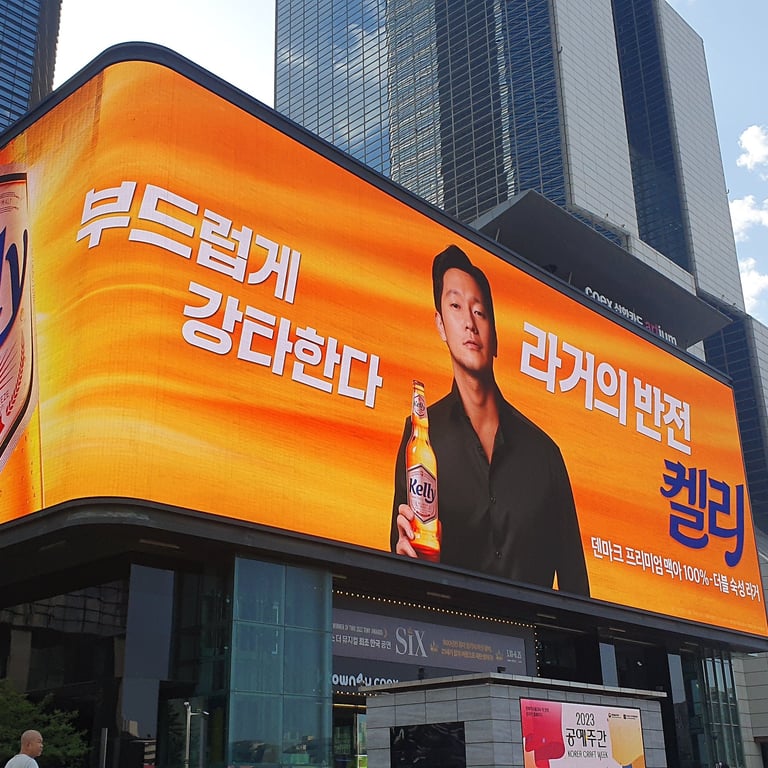
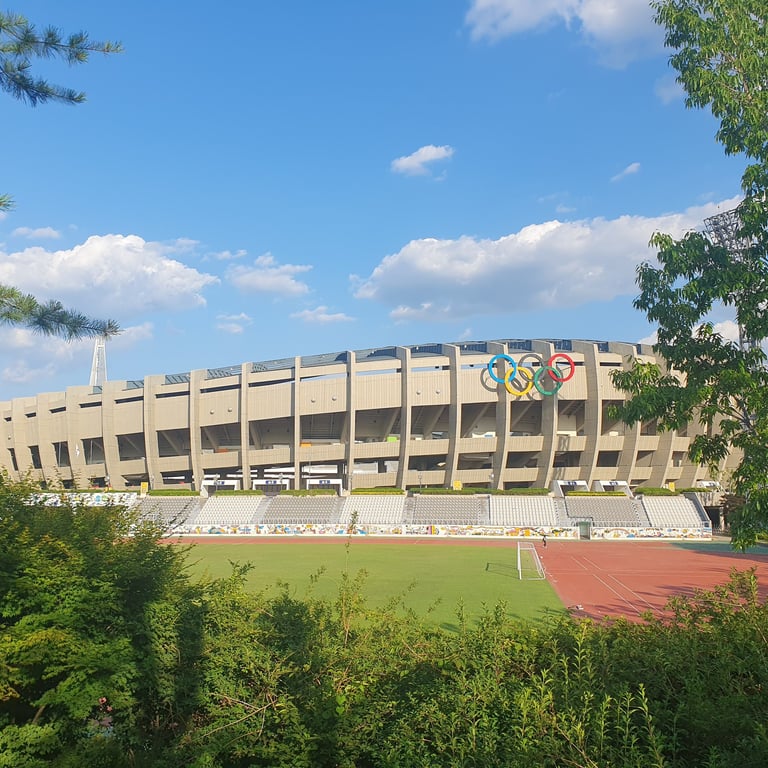
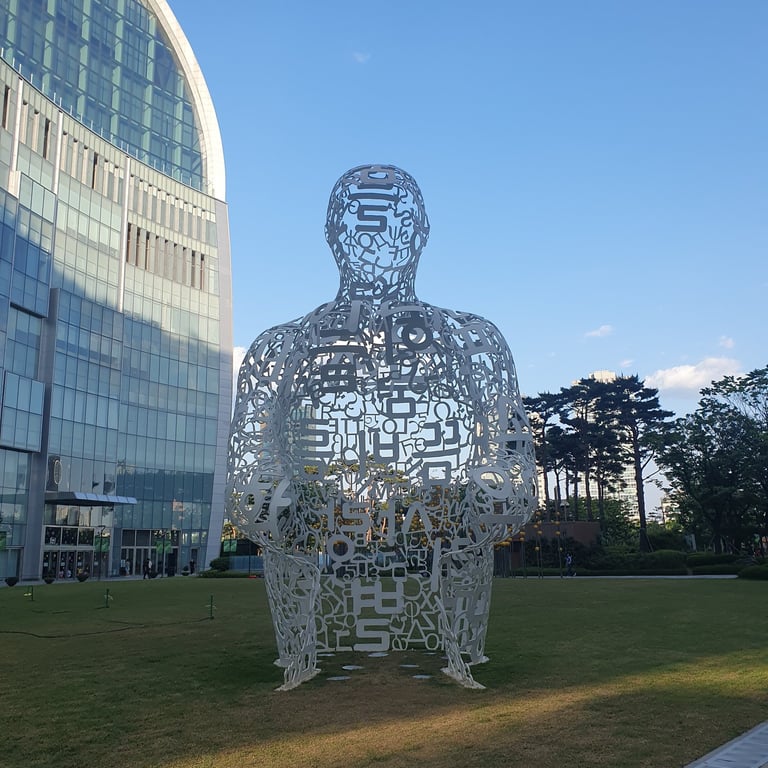
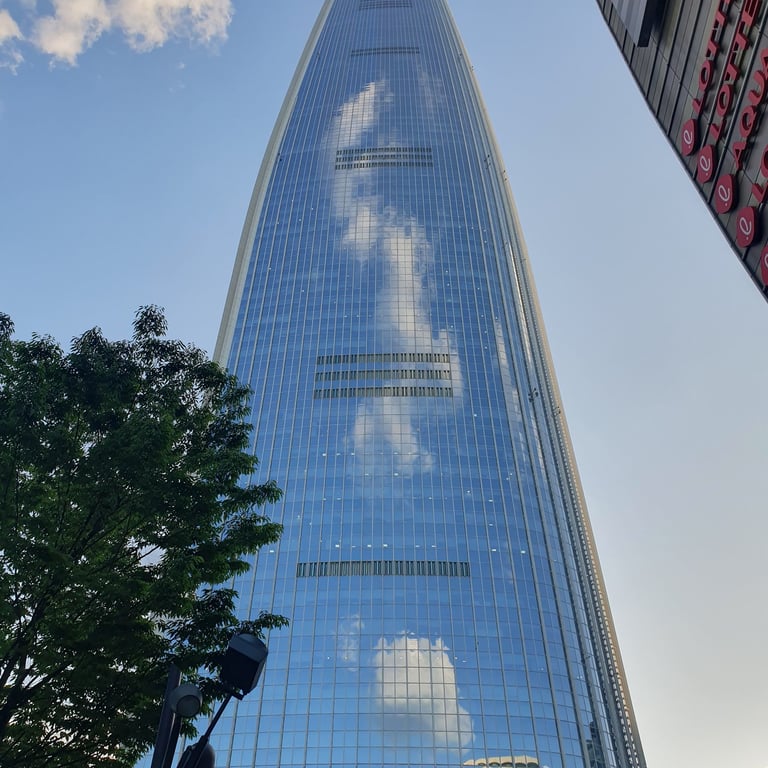
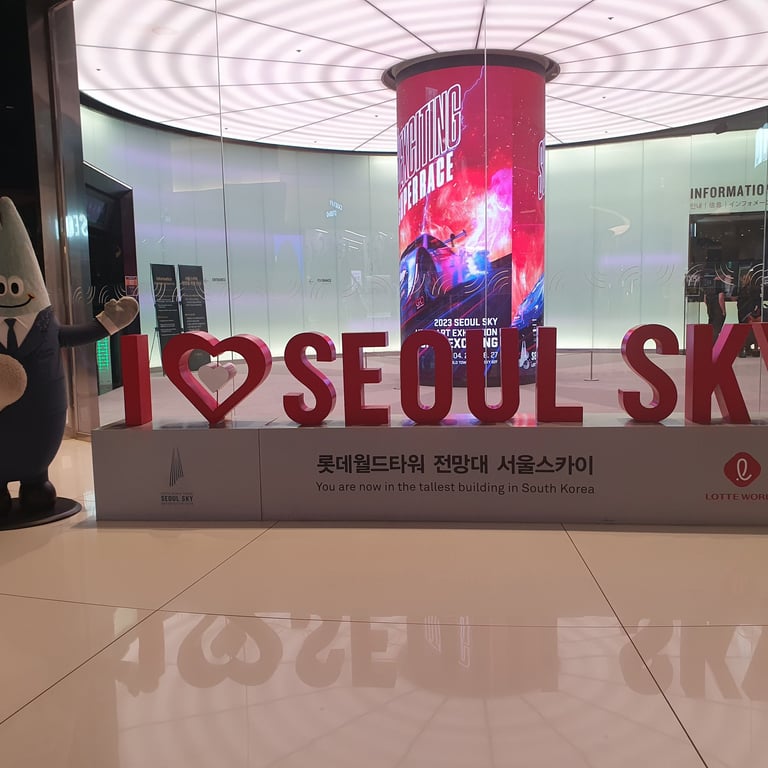
Fun fact: The text in Arabic was written from left to right, whereas Arabic is traditionally written from right to left... it creates a sort of "verlan" effect. This small wall inscription is visible in the park adjacent to the Lotte Tower.
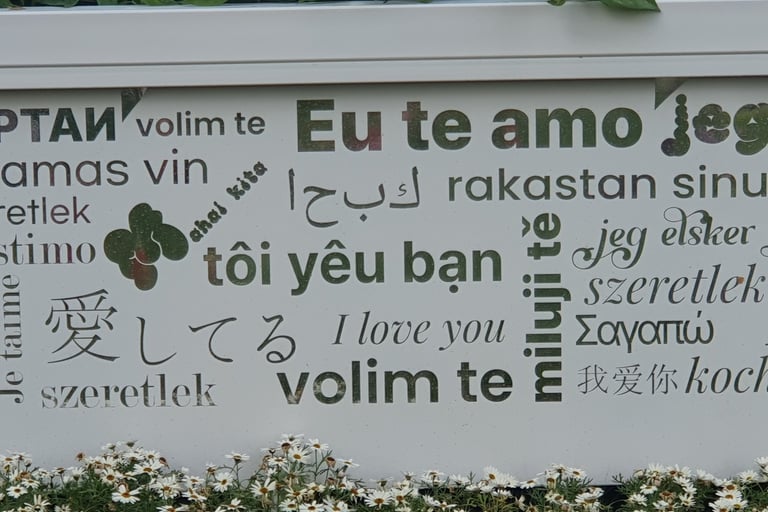

I highly recommend going up the Lotte Tower; from the 118th floor at the Sky Desk, you’ll have a breathtaking view of Seoul.
The floors between the 119th and 123rd offer other panoramas and activities. We chose to go up there at the end of the day to enjoy the sunset and admire Seoul at twilight and then at night.
And it was absolutely worth it. Enjoy the view!
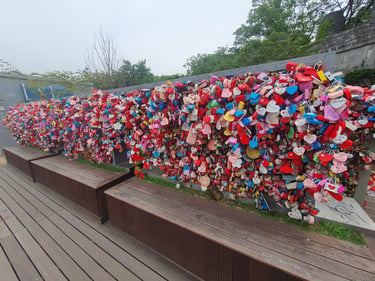
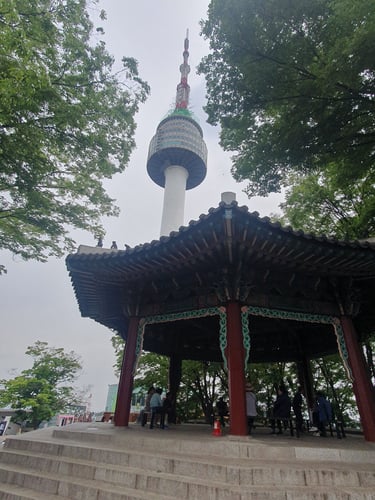
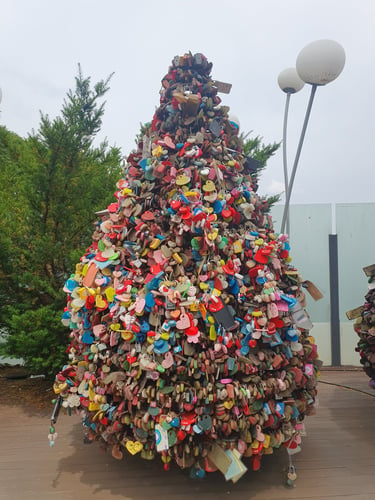

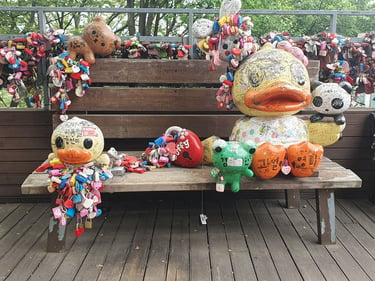
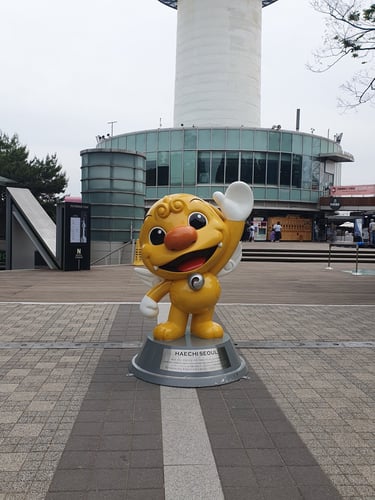
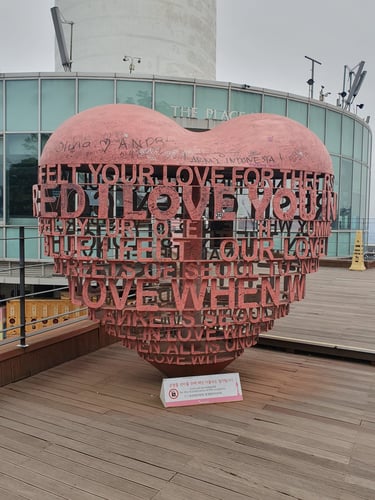
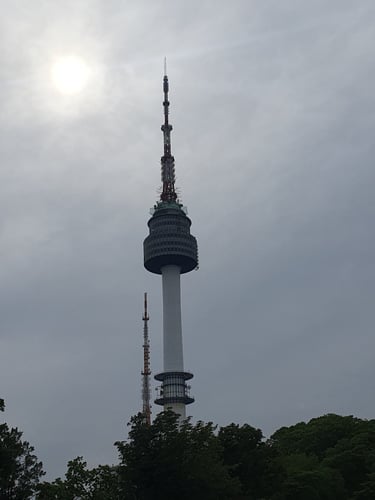
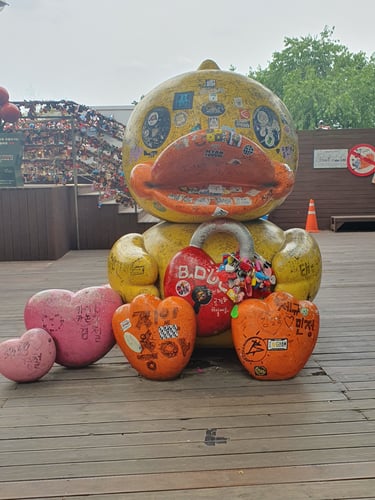
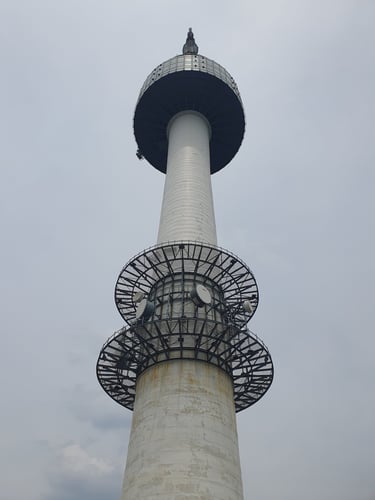
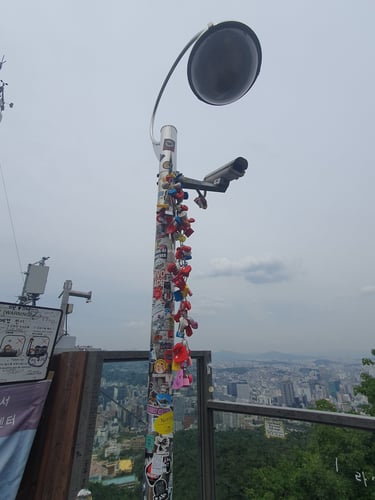











Another must-see spot in Seoul is the Namsan Seoul Tower. You can see it from afar, and it offers a wide view over the city. A very Instagrammable spot, it appears in countless K-dramas. It’s actually a telecommunications and observation tower, standing atop Namsan Mountain.
It’s a bit reminiscent of Paris with its thousands of locks attached by couples to guarantee eternal love. Love is in the air.
The "Namsan Tower" often puts on a show, changing colors according to the seasons or important events. It also alternates between four colors to indicate pollution levels, allowing Seoul residents to wear masks if the air quality requires it: Blue - Good / Green - Moderate / Yellow - Poor / Red - Very Poor.
From this vantage point, the view of Seoul is once again breathtaking. The city appears even more vast. The forest of skyscrapers seems endless, though it is broken up by the Han River.
Still at Namsan Tower, daily martial arts demonstrations and folk concerts take place from 3:00 p.m. to 3:30 p.m., except on Mondays. These include demonstrations of spear mastery, swordsmanship, and bare-handed boxing.
The next stop on our itinerary was Banpo Bridge with its colorful, dancing fountains. After getting off the subway, we walked the distance along the Han River to reach the bridge. On the way, we passed the Seoul Wave Center, which houses a Starbucks with a view of the river. We arrived just in time for the golden hour, and here’s what it looked like.
Arrival at Banpo Bridge.
Banpo Bridge (Banpo-daegyo) is an iconic spot in Seoul, renowned for its "Rainbow Fountain." Located in the heart of the city, this bridge spans the Han River. Opened in 1982, it stands out not only for its two-tier structure – with the lower level being the Jamsu Bridge, which becomes submerged when water levels rise – but also for its spectacular Rainbow Fountain, installed in 2009.
Each evening, the Banpo Rainbow Fountain lights up the Han River with water jets and colorful LED lights that create a vibrant display of colors and music. Stretching 1,140 meters on each side of the bridge, it is now the longest bridge fountain in the world. This enchanting show draws numerous visitors, especially during the warmer season, making Banpo Bridge a romantic and popular destination for both Seoul residents and tourists.
The show takes place daily, four times on weekdays and five times on weekends from April to August. The schedule varies across the first three and the following three months.
This magical performance marked the end of our stay in Seoul, and we then headed towards Gyeongju, the capital of the Silla Kingdom.

